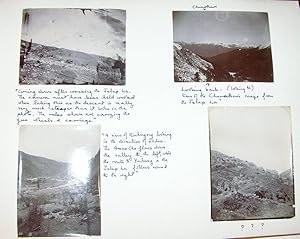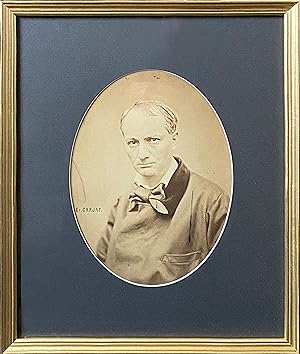photographies (Plus de 376 000 résultats)
Type d'article
- Tous les types d'articles
- Livres (334 193)
- Magazines & Périodiques (7 101)
- Bandes dessinées (79)
- Partitions de musique (531)
- Art, Affiches et Gravures (1 807)
- Photographies (27 975)
- Cartes (235)
-
Manuscrits &
Papiers anciens (4 706)
Etat
Reliure
Particularités
- Edition originale (85 337)
- Signé (19 689)
- Jaquette (60 630)
- Avec images
- Sans impression à la demande (357 718)
Livraison gratuite
Pays
Evaluation du vendeur
-
[Photograph archive and album. Album title]: Visit to Lahore of His Highness Skeikh Zayed bin Sultan Alnahayyani the ruler of Abudhabi (16th to 28th November, 1967).[Pakistan, 1967-1971]. An archive of 183 photographs: 133 loose black and white photographic prints (ca. 30 x 25 cm), 30 smaller ones (ca. 5 x 6 cm) numbered and mounted together on a single sheet of paper, and 20 additional prints in the album. Further with numerous rolls of original medium format negatives.Original black half morocco album, green cloth sides with title and emblem of the United Bank Limited Pakistan on the front board.
Vendeur : Antiquariaat FORUM BV, Houten, Pays-Bas
A trove of unpublished photographs depicting two official visits to Pakistan by HH Sheikh Zayed bin Sultan Al Nahyan. The earlier visit, in 1967, is documented by a separate photo album containing images of the visit to Lahore, the second largest city of Pakistan, from 16 to 28 November 1967. The album opens with a picture of HH Sheikh Zayed arriving in his car; later pictures show him being honoured and presented with an album very similar to the present one, and in the company of officials representing Pakistan s United Bank Limited (UBL). Almost 20 years later, in 1986, Sheikh Zayed would donate a hospital to the city, now the "Shaikh Zayed Medical Complex", one of the leading medical institutions in Pakistan.The 30 small photographs show an audience with Sheikh Zayed as well as a banquet in his honour, attended by various Pakistani dignitaries including Agha Hasan Abedi (1922-1995), the illustrious founder of UBL. These photos, apparently clipped from a set of medium format contact prints, are mounted on a sheet of coated black photographic paper.The largest set in size and number shows the state visit that took place on 20-22 January 1970 at the invitation of President Yahya Khan (1917-1980). It provides extensive documentation of the large Abu Dhabi delegation being formally received by Yahya Khan, who served as president of Pakistan from March 1969 to December 1971. Many show HH Sheikh Zayed shaking hands with and speaking to President Yahya; others show the airport reception, formal dinners, speeches, but also informal conversations, members of the delegation handling falcons, and numerous high-ranking Abu Dhabi retainers. Among the persons depicted is again Agha Hasan Abedi, but there are also several pictures of Butti bin Bishr, secretary to Sheikh Zayed, and Ahmed bin Khalifa Al Suwaidi, the first Minister of Foreign Affairs of the UAE and personal representative of Sheikh Zayed. President Yahya Khan had been "one of the very first international leaders to reach out to Sheikh Zayed after the UAE had been founded and had, prior to this, in July 1970, been instrumental in creating an agreement to provide technical assistance to the then Trucial States. With the December 1971 union agreement approaching, Pakistan was quick to forge even closer ties, and Khan had been one of the first foreign leaders to offer his congratulations and reiterate his country s support when the UAE was born. Full diplomatic ties were then quickly established, and Pakistan became one of the first to extend recognition to the new country . All his life Sheikh Zayed had held a personal affinity for Pakistan. He had hunted there extensively, came to know the people, its culture and lands, and enjoyed close ties with leaders" (Wilson).From the estate of Azhar Abbas Hashmi (1940-2016), Pakistani financial manager and eminent literary patron with close ties to Karachi University. Hashmi served the UBL for many years, becoming its vice-president before founding several important cultural organisations and becoming known as a man of letters in his own right. Thanks to his close connections with the Gulf states, Abu Dhabi provided funds to build Karachi University s faculty of Islamic studies, as well as its Sheikh Zayed Islamic Centre and it mosque, Jamiya Masjid Ibrahim.The majority of the photographs are entirely unmarked, but they occasionally show an Arabic inscription or stamp on the reverse. Some of the loose photographs slightly scuffed along the edges, with an occasional nick or small tear, but otherwise in fine condition. Binding of the album slightly rubbed. An important collection of at least largely unpublished photographs concerning the Sheikh of Abu Dhabi s visits to Pakistan in the last years before the formation of the UAE, entirely unknown and without counterparts in the UAEhistory, Keystone or Hulton/Getty press photo archives.l Cf. G.H. Wilson, Zayed: man who built a nation, pp. 111-112.
-
Égypte, Nubie, Palestine et Syrie: dessins photographiques recueillis pendant les années 1849, 1850 et 1851, accompagnés d un texte explicatif et précédés d une introduction.
Edité par Paris, Gide & J. Baudry, 1852., 1852
Vendeur : Antiquariat INLIBRIS Gilhofer Nfg. GmbH, Vienna, A, Autriche
Edition originale
Folio (447 × 315 mm). 125 mounted original salt prints, letterpress captions to mounting leaves and tissue-guards, 3 small engravings to the introductory text, double-page engraved plan of Karnak, single-page plans of Medinet-Habu and the island of Philae. Recent half brown cloth, marbled boards, original spine, brown hard-grained morocco laid down, title gilt direct, low flat bands with dotted roll gilt, double fillet panels to the compartments, new endpapers, original marbled free endpapers retained. Extremely rare first edition, complete, illustrated with 125 salt prints from wet paper negatives (Blanquart-Evrard process) mounted one to a page. Maxime Du Camp s monumental survey, "Égypte, Nubie, Palestine et Syrie", was the first of its kind, the first travel album to be completely illustrated with photographs of archaeological monuments. - A young man of independent means, Du Camp learnt the craft of photography from Le Gray in 1849 in preparation for his second journey to North Africa. By the time he came to Abu Simbel in March 1850 to explore the rock-cut temples built by Ramesses II (reigned 1292-1225 BC), Du Camp was thoroughly at ease with the medium. With official backing from the French Government, and travelling in the company of the novelist Gustave Flaubert, Du Camp returned with over 200 paper negatives of the antiquities of Egypt and the Near East, of which 125 were published in the present work. The illustrations were produced at the photographic printing works of Louis-Désiré Blanquard-Évrard at Lille and their distinctive cool neutral tones are due to the prints being chemically developed rather than merely printed-out in sunlight. - Distinguished as it was, Du Camp s photographic career was short-lived. After the completion of his magisterial survey of the antiquities of the Near East, he abandoned photography entirely in favour of literary pursuits. - Soundly bound, presenting well on the shelf. Front hinge slightly cracked towards the head at the first blank, some very light foxing throughout, but altogether an excellent copy. - Parr/Badger, The Photobook, I, 73. QNL Inaugural Exhibition (2018), 153.
-
Magnificent Album of Mammoth Photographs of the American West, with other subjects
Edité par various, ca. 1865-1880s, 1865
Vendeur : 19th Century Rare Book & Photograph Shop, Stevenson, MD, Etats-Unis
Photographie
Hardcover. Etat : Fine. Large oblong folio. 39 albumen prints, on thick card mounts, recto and verso, comprising: 29 mammoth (approx. 20 x 16 in.), 4 large format (approx. 8 x 10 in.) and 6 medium format (approx. 5 x 8 in.) prints. Six of the mammoth photographs bear the Taber imprint and the Watkins negative number. Contemporary half red morocco gilt, gilt edges. Minimal wear, some fading to the handsome binding. Foxing to mounts. Minor fading. A splendid volume with the prints generally in excellent condition. This magnificent American West photograph album contains an astounding 21 mammoth photographs by leading photographers including Carleton Watkins, Charles R. Savage, and Isaiah West Taber, as well as other important photographs. The album features a major new discovery, Carleton Watkins s Sentinel Rock, Down the Valley, from U. Point, Yosemite, which is not in Naef and Hult-Lewis, Carleton Watkins: Complete Mammoth Photographs. Weston Naef has examined this print and confirms that it is the only located example of the long-sought negative 684, known only from inventories until now. As specimens of the photographic art they are unequaled. The views are indescribably unique and beautiful. Nothing in the way of landscapes can be more impressive. New York Times on Watkins s Yosemite photographs, 1862. Carleton Watkins and Yosemite Carleton Watkins was the greatest of the first generation of photographers of the American West. His early photographs of Yosemite and Utah have never been surpassed. The scale of Watkins s monumental subjects was matched by his ambition and drive, which dwarfed that of his competitors. The photographer commissioned a San Francisco cabinetmaker to create a camera capable of accommodating glass plates as large as 18 x 22 inches. In a series of grueling expeditions over several decades, he took into the wilderness a wagon and a train of mules carrying hundreds of pounds of equipment and heavy glass plates. The amazingly detailed photographs made with the unique mammoth-plate camera brought Watkins international renown. The first four Yosemite photographs in this album date to Watkins s first expedition (1865-1866). Watkins chose thirty of these for exhibition at the 1867 Paris Exposition, where he won the first-prize medal for landscape photographs. Four of those photographs are present here. For more than 150 years Watkins has retained his place as one of America s greatest photographic artists. Watkins s views are the finest landscape photographs produced by an American in the nineteenth century, and some of the most sophisticated and arresting images ever produced with a camera (Nickel). The album includes the following mammoth Watkins prints: Section of the Grizzly Giant with Galen Clark, Mariposa Grove (1865-1866); Yosemite Falls, from Glacier Point (1865-1866); Cathedral Spires, Yosemite (1865-1866); Grizzly Giant with a Group of Hunters at the Foot of the Tree, Mariposa Grove, Yosemite (1865-1866); The City from the Residence of Bishop Kip, Rincon Hill, San Francisco (1864-1865); Sugar Loaf Island and Seal Rocks, Farallon Islands (1868-1869); and Sentinel Rock, Down the Valley, from U. Point, Yosemite, Cal. (c. 1870). The last of these is not in Naef and Hult-Lewis. Weston Naef reports that this is undoubtedly Watkins s Sentinel Rock, the long-sought negative 684. According to Naef, this may be the only extant print of this photograph. Yosemite and San Francisco by Isaiah W. Taber Isaiah Taber was a dominant figure in Western photography after the Civil War. He came to San Francisco in 1864 and founded a gallery in 1871. In the winter of 1875-76, Carleton Watkins went bankrupt, and Taber acquired his gallery and his enormous collection of negatives. Once he had acquired Watkins s gallery and negatives, Taber began his bid for the exalted position of premier photographer of the west coast (Palmquist, Pioneer Photographers of the Far West). Many of Watkins s prints were released with Taber s imprin.
-
Reise in das Innere Nord-America in den Jahren 1832 bis 1834
Edité par J. Hoelscher, Coblenz, 1841
Vendeur : Donald A. Heald Rare Books (ABAA), New York, NY, Etats-Unis
4 volumes (text: 2 volumes, large quarto [11 1/2 x 9 3/4 inches]; Tab. atlas of plates, oblong folio [17 x 23 3/4 inches]; Vig. atlas of plates, oblong small folio [11 1/2 x 17 inches]). Text: 12pp. subscribers' list [front of vol. II], 52 wood-engraved illustrations. Tab. atlas: 48 aquatint plates [17 hand-coloured], after Karl Bodmer, each plate with the Bodmer blind-stamp, engraved by J. Hurliman, L. Weber, C. Vogel, Salathé, Himely, Prévost, R. Rollet, P. Legrand, Desmadryl, and others, 1 large folding engraved map by Lieut.-Col.W. Thorn, titled "Map to illustrate the Route of Prince Maximilian of Wied," hand-coloured in outline. Vig. atlas: 33 aquatint plates [3 hand-coloured], after Karl Bodmer, heightened with gum arabic, each blindstamped "C. Bodmer / Direct," engraved by C. Vogel, L. Weber, J. Outhwaite, J. Hürlmann, Himely, Martens and others, 1 folding meteorological table. Extra-illustrated with the original lettered blue wrapper bound at the front of the large atlas. Expertly bound to style in half dark blue morocco over blue patterned paper covered boards, spine gilt, speckled edges This masterpiece is the pinnacle of illustrated works devoted to North America, and unquestionably the greatest of all illustrated books devoted to Indigenous Americans. Reise in Das Innere Nord-America is the finest work on Indigenous Americana and the American frontier and is the result of an epic journey which took place at a time when the mass migration of settlers and pioneers was about to irrevocably alter the unspoiled West. Karl Bodmer (1809-1893) was engaged by Prince Maximilian (already famed for his earlier explorations to Brazil) to provide a record of his travels among the Plains Indians of North America during 1833-1834. His efforts show great versatility and technical virtuosity and give us a uniquely accomplished and detailed picture of a previously little understood and soon to vanish way of life. The most important part of the travels of Prince Maximilian and Karl Bodmer started in St. Louis, whence they proceeded up the treacherous Missouri River along the line of forts established by the American Fur Company. At Bellevue they encountered their first natives, then went on to make contact with the Sioux tribe, learning of and recording their little known ceremonial dances and powerful pride and dignity. Transferring from the "Yellow Stone" to another steamer, the "Assiniboine", they continued to Fort Clark, visiting there the Mandan, Mintari and Crow tribes, then the Assiniboins at Fort Union, the main base of the American Fur Company. On a necessarily much smaller vessel they journeyed through the extraordinary geological scenery of that section of the Missouri to Fort Mackenzie in Montana, establishing a cautious friendship with the fearsome Blackfeet. From this, the westernmost point reached, it was considered too dangerous to continue and the return journey downstream began. The winter brought its own difficulties and discomforts, but Bodmer was still able to execute numerous studies of villages, dances and especially, the people, who were often both intrigued and delighted by his work. The portraits are particularly notable for their capturing of individual personalities, as well as forming, together with Prince Maximilian's written studies, the primary account of what have become virtually lost cultures. Bodmer's atlas, made up of smaller vignettes and larger tableaus of scenes from the trip, is justly famous for its extraordinary depictions of the native peoples of the Upper Missouri. These are, in fact, the best depictions of Indigenous Americans executed before the era of photography, and certainly the best of the Plains tribes in their heyday. Illustrated are hunting scenes, portraits of individual warriors including the famous Mato-Tope, Indian dances, scenes on the trip up the Missouri and along the river in its upper reaches, scenes among the Mandans, scenes of the fur trade forts, and illustrations of Indian artifacts. No other images of American Indians even come close to these in accuracy, detail and execution, faithfully transferred from the originals to the aquatint plates under Bodmer's close supervision. As the original prospectus explains, the work was issued with the plates in five formats (the list of subscribers in the front of vol. 2 of the text shows which version was purchased by each subscriber by means of the following numbers):1) uncoloured on regular French paper; 2) uncoloured on India paper (i.e. "chinesisches papier"); 3) on regular paper with 20 plates hand coloured [as the present set]; 4) on India paper with 20 plates hand coloured; 5) on "Imperial velin papier" with all plates printed in colour and hand-coloured. In addition, the two text volumes were issued in regular and large paper, with the latter reserved for purchasers of the deluxe fully coloured version. Abbey, Travel II,615; Field Indian Bibliography 1036; Graff 4648; Howes M-443a; Pilling 2521; Radar 3652; cf. Sabin 47017; Wagner-Camp 76:3; Wheat Transmississippi West 2: map 445; cf. Goetzmann (et al), Karl Bodmer's America (1984).
-
[Life-size photograph of the Fra Mauro map of the world].Venice, Carlo Naya, ca. 1871. Hand-coloured photograph, ca. 223 × 223 cm. Mounted and framed.
Vendeur : Antiquariaat FORUM BV, Houten, Pays-Bas
A life-sized, hand-coloured photograph of the famous world map made around 1450 by Fra Mauro, the greatest medieval map of the world and the largest surviving European map of such an early date: an astonishing accomplishment of art history, cartography and photography. Perhaps the largest photograph ever made at the time, the "Naya Fra Mauro" belongs to a class of colossal early photographs that includes Eadweard Muybridge s 13-sheet panorama of San Francisco (1878) - though each sheet measured only about 46 x 55 cm - and George R. Lawrence s photograph of the Alton Limited on a 244 x 137 cm glass plate (1899). It also appears to be the first large-format map produced photographically.Fra Mauro s map is "considered the greatest memorial of medieval cartography" (Almagià). Containing hundreds of detailed illustrations and some 3000 descriptive texts, it was the most detailed repres-entation of the world so far produced. It remains one of the most important works in the history of cartography, marking the end of Bible-based geography in Europe and the new embrace of more scientific methods that placed accuracy ahead of religious or traditional beliefs. Strikingly, it is oriented with south at the top, recalling the Arabic tradition and more specifically al-Idrisi s famous 12th century world map, copies of which Fra Mauro may have known: Europe is shown at the foot, and Africa and Asia dominate the image, with Arabia (not Jerusalem) at the centre. Fra Mauro incorporated "the discoveries of Marco Polo and the Portuguese" as well as "many countries later known, which the learned monk doubtless shaped after ideas gathered from the oral narratives of occasional travellers" (Müller). Much of the map s novel information was lost to early modern cartographers when printed Ptolemy atlases proliferated in the final decades of the 15th century, replacing the manuscript mappa mundi tradition.Today the original Fra Mauro Map, drawn on vellum, is held by the Biblioteca Nazionale Marciana in Venice and shown at the Museo Correr. The British antiquarian William Frazer prepared an impressive manuscript facsimile in 1804, now in the British Library; a large engraving was made in Paris in 1849, and in 1869 the Venetian bookseller Münster produced the first photographic reproduction, albeit at a much smaller scale, measuring a mere 62 × 68 cm. Carlo Naya s monumental Fra Mauro photograph renders the map in its full original size. Although it is mentioned in a number of books on early Italian photography, it was always extremely rare: the only photographic copies of the map ever to have surfaced in the trade were that of Münster (lot 1581 at the 1884 sale of the library of Henry C. Murphy, U.S. ambassador to the Netherlands under Lincoln) and the more common four-print photofacsimile published in 1879 by Ongania (E. P. Goldschmidt, cat. 22, London 1930, lot 32). By contrast, Naya s magnum opus was never sold except through his own concern. The Royal Geographical Society was presented with a specimen in 1873 (the gift of John Benjamin Heath, once Governor of the Bank of England), and the British Library holds another, as does the Marciana (all uncoloured). National Library of Wales, Aberystwyth, has a very fragile and faded example, cut into 16 sheets and mounted on modern paperboard.Carlo Naya (1816-82) was an Italian photographer known for his fine views of Venice. He settled there in 1856, opening a photo studio that catered to "grand tourists" who wished to take home mementoes of the city s spectacular art and architecture. His mappa mundi photograph was prepared around 1871 under the supervision of the Venice-based English historical scholar Rawdon Brown (1806-83), a friend of Ruskin s. Naya exhibited his photograph at the 1873 World s Fair in Vienna, winning a medal for it. In the 1880s the Nayas were still advertising the map, the pride of the company, as a "fac-simile of the Planisphere of Fra Mauro A.D. 1459, the largest photograph hitherto made (a square 7 ft. 4 inch)". It was priced at a stupendous 200 francs. After Naya s death, his wife and then her second husband continued his studio for three and a half decades.With ink stamps of the publisher Osvaldo Böhm on the back of the photograph, who bought most of Naya s archive when the family closed the shop in 1918. Later the photograph was part of the collection of Dr. Edward Luther Stevenson (1858-1944), one of the most important scholars of early cartography active at the end of the 19th and the first half of the 20th century. Stevenson was responsible for numerous carto-bibliographic books, including the first translation of Ptolemy into English, as well as a series of impressive facsimile maps. Stevenson, who viewed reproductions as integral to the study of early cartography, committed himself to building an unparalleled collection of photographs of early maps and globes. Much of his collection was donated to Yale University after his death, but the present item comes from a large corpus of photos, manuscripts and related material retained by the family. In very good condition.l Almagià, Monumenta cartographica vaticana, vol. 1 (1944); Becchetti, Fotografi e fotografia in Italia 1839-1880 (1978), p. 124; Falchetta, Storia del Mappamondo di Fra Mauro (2016); Müller, Venice: her art-treasures and historical associations: a guide to the city (1873) p. 113; Zannier, Venice: the Naya collection (1981).
-
Signed Photograph
Edité par n.p., New York, 1896
Vendeur : Manhattan Rare Book Company, ABAA, ILAB, New York, NY, Etats-Unis
Edition originale Signé
Etat : Fine. First edition. STUNNING LARGE HISTORIC PHOTOGRAPH OF TESLA, SIGNED AND INSCRIBED BY TESLA TO EDWARD EVERETT BARLETT. Albumen print, signed and inscribed by Tesla on the original gray mount: "To my friend E. E. Bartlett, New York, June 9, 1896, Nikola Tesla." The photograph shows Tesla in profile seated before the spiral coil of his high-voltage transformer at his East Houston St., New York, laboratory. The photograph, in addition to being arguably the most famous and dramatic portrait of Tesla, is scientifically significant, for it served as a demonstration of the power of his new technique of providing illumination with vacuum tubes. A reproduction of the photograph appeared in the May 20, 1896 issue of Electrical Review, alongside an article where a reporter interviewed Tesla about the novel circumstances of the creation of this photo: "As to his continuous efforts to improve his system of lighting by vacuum tubes, with which he has been identified during a number of years, Tesla said that he has been more successful than he had ever dared to hope. His methods of conversion from ordinary to high-frequency currents are rendered simple in the extreme, the devices are thoroughly reliable and require no attention. Last, but most important of all, he has succeeded in increasing the candle-power of the tubes to practically any intensity desired. "A remarkable and most telling result of the advances he has made in the last direction is a portrait, which he has reluctantly allowed us to use, and which was obtained by two seconds' exposure to the light of a single vacuum tube of small dimensions. Tesla stated further that photographs obtained by the light of such powerful tubes show an amount of detail which no picture taken by the sun or flash light is capable of disclosing. This feature is only faintly shown in the reproduction on this page. The photograph was made by Tonnelé & Company, artists' photographers, who aided Mr. Tesla in his attempts to photograph by the light of phosphorescent tubes about two years ago. "When asked, Mr. Tesla said, in explanation of the picture, speaking with deep feeling, that the volume he was reading was one of the 'Scientific Papers,' of Maxwell, given to him as a token of friendship by Professor Dewar; the chair a gift of his warmest friend, Mr. E. D. Adams; and as to the queer coil to his left, Mr. Tesla hesitatingly remarked that it was the object 'dearest of all in his laboratory,' having been a most valuable instrument in his many-sided investigations. "Mr. Tesla added, good humoredly, that, had it not been for the extraordinary manner in which the photograph was taken, he would not have given this explanation even to such an important personage as the representative of the ELECTRICAL REVIEW." Tesla was correct in insisting that the lighting from the vacuum tubes produced a high-level of detail in the photograph; the intricacies of the coil, in particular, appear remarkably sharp. Overall, the photograph has an orange tint, almost certainly the result of his novel lighting technique. Although this is the only signed example of this photograph we are aware of, it has been reproduced in recent years many times, including serving as the cover image for Marc J. Seifer's groundbreaking biography of Tesla, Wizard. Provenance: The recipient, Edward Everett Bartlett (1863-1942) was a celebrated New Yorker (both he and Tesla were featured in Moses King's Notable New Yorkers, 1896-1899), who founded Bartlett & Co., (later Bartlett Orr Press) on lower Broadway, in 1888. Variously described as an artist, illustrator, printer, and engraver, Bartlett was internationally known as "an expert on newspaper type, and he was credited with the development of much of the linotype type used in newspaper offices throughout the country"; additionally he published several works on the art of the book. (New York Times, Obituary, 1942). Size: Image, 7 3/4 x 9 1/2 inches; with mount, 8.5 x 11 inches. Archival matting and framed with UV-.
-
Waffenhandlung von den Rören. Musquetten. undt Spiessen. Gestalt nach der ordnung dess Hochgebornen Fursten und Herrn herrn Moritzen Printzen zu Oranien, Graffen zu Nassaw.The Hague, [Hillebrant Jacobsz. van Wouw, 1607-1608]. 3 parts in 1 volume. Small 1mo (37.5 x 28 cm). With engraved title-page and 117 full-page engraved plates (ca. 26 x 19 cm). All plates and the engraved title-page magnificently coloured and lavishly highlighted with silver and gold by a contemporary hand. 18th-century mottled calf, gold-tooled with the arms of the Count Palatine of Sulzbach and his wife on each board and richly gold-tooled spine.
Vendeur : Antiquariaat FORUM BV, Houten, Pays-Bas
[10], [8], [11] ll.Magnificent copy of one of the rare 1608 editions, with the German title, English dedication and note to the reader and text in English, French, German and Dutch. Known in English as The exercise of arms, it was written and illustrated by Jacques de Gheyn and quickly became a famous pictorial army manual for use of officers to teach the young recruits how to handle their weapons: the arquebus (part 1), musket (part 2) and pike (part 3).It gives an excellent picture of the successful army of the Dutch Republic after its reform by Prince Maurits, who (re)introduced exercises and discipline. It also immortalizes Prince Maurits as a military thinker and commander of the most disciplined army of his age.The book met immediate success and makes a considerable contribution to our knowledge of military history. Fully coloured copies like the present were produced largely for princes and other important persons and were probably coloured by De Gheyn himself who was certainly responsible for the high standard of the colouring.In the 18th century our copy was owned by and bound for Charles Philippe Theodore Count Palatine de Sulzbach (1724-1799), Duke of Bavaria, Jülich, Kleve and Berg, Prince of Mörs, Count of Veldentz, Lord of Ravenstein and last Margrave of Bergen op Zoom (1733-1794), with his and his wife's coat of arms on each board.The slips on the title-page have browned slightly and there is occasional minor soiling, mostly in the lower right margin, but the book is in very good condition. A magnificently coloured copy of a work of major importance in military history.l Meij, Jacques de Gheyn II als tekenaar, p. 12, nos. 15-20 (pp. 45-47); New Hollstein, The De Geyn Family II, 340-457.
-
Her personal archive of approximately 350 photographs
Edité par [Hampstead and elsewhere], 1858-1864, 1858
Vendeur : 19th Century Rare Book & Photograph Shop, Stevenson, MD, Etats-Unis
Photographie
No Binding. Etat : Near Fine. Provenance: Emma Frances Johnston (1834-1905), with her inscriptions dated 1858, 1864 and 1904; her niece, Anne R. Hanson, with her inscription dated March 1915. This tremendous discovery is the extensive photographic archive of the little-known Victorian photographer Emma Frances Johnston. This is apparently the earliest comprehensive archive of a female photographer in private hands. Beginning around 1858, Johnston made this wonderful series of portraits of her friends and extended family comprising the intellectual and social world of nineteenth- century Hampstead in London. The introduction of the wet collodion process in the 1850s brought a minor wave of amateur photographers, very few of them women. At around the time that Emma Johnston was making her portraits in Hampstead, Lady Clementine Hawarden began to make her photographs. Julia Margaret Cameron took up photography when she received a camera as a gift in 1863. This unique collection is essentially the only known source for the study of Emma Johnston and her portraits. She was one of the three children of James, a solicitor, and Mary. Her sister Jane married the Reverend Hesketh Hanson, but Emma never married. She took up photography in her twenties, posing family and friends for hundreds of portraits, often outdoors. Most of these photographs were taken in the gardens of her home Manor House. Several pieces of furniture reappear in what a later caption describes as a Pond Street house. A few images show Manor House, North End Gardens, and nearby cottages. Miss Johnston also experimented with stereoscopic photography. Her Numerical List manuscript index details some 37 stereo negatives. Three survive in this archive, depicting the photographer s mother and various children outdoors in Hampstead. This manuscript list of negatives, a rare survival, reveals that Emma Johnston made some three hundred exposures that she considered worth listing. The introduction of passenger rail service connecting Hampstead with central London in the 1860s accelerated the growth of the picturesque village. Johnston knew and photographed a wide range of scientists, intellectuals, diplomats, architects, and artists, and she also valued her interactions with the friends, children, and pets of the neighborhood. Sitters include: Emma herself; her mother Mary Ellen Johnston; her sister Jane with others; James Hickson, solicitor, Highgate; Marianne and Adeline Ainger (sisters of Alfred Doubleday Ainger, man of letters); Alfred himself; his father, the architect behind Emma s final home Bayswater Terrace; William Wilkinson Wardell (1823-1899), Australian architect of St Mary s Cathedral, Sydney, and St. Patrick s, Melbourne; Frederick Erasmus Edwards and other geologist-palaeontologists; James De Carle Sowerby (1787-1871), son of the English Botany editor; George Robert Waterhouse (1810-1888), curator at the Zoological Society of London; Clarkson Stanfield R.A. (1793-1867), marine painter; Theodore Trezevant (1806-1868) of South Carolina; one of the Farquhar Trezevant children in the doorway of a house on Pond Street; Lady Hanson, wife of Sir Reginald Hanson (Lord Mayor of London) with her Bingley and Hawkes relations; Henry Alabaster (1836-1884), diplomat; Juno the dog; Joanna Mary Boyce (1831-1861), artist and Pre-Raphaelite sister; her brother George (1826-1897); Lydia Reed and sister, our cook s children ; Harriet, another cook and assistant photographer ; William Charles Thomas Dobson R.A. (1817 1898); Charlie the Good, a spaniel; Bram the Beautiful ; and Rev Sam Hawkes (1832- 1888), possibly a photograph of a daguerreotype. Johnston was a woman of independent means who had the talent, determination, and wherewithal to pursue her interest in the male-dominated field of photography. She died in 1905 at age seventy. This is a major resource for the study of early photography by women. The discovery of a major intact archive by an accomplished early female photographer is an.
-
Les Roses.
Edité par [Paris]: Léon Curmer, 1861-1863., 1863
Vendeur : Arader Galleries - AraderNYC, New York, NY, Etats-Unis
3 volumes. 16mo., (5 ¾ x 4 ¾ inches). ORIGINAL MANUSCRIPT half-titles and vignette title pages LAVISHLY ILLUMINATED IN GILT AND COLOR. 113 EXQUISITE MINIATURE WATERCOLORS plus frontispieces; 3 engraved plates, original pen sketch and 2 photographic portraits inserted (very occasional offsetting, engraved plates slightly toned). Contemporary red morocco, green morocco gilt doublures, green moiré silk guards, by Marius Michel; red levant chemises and pull-off cases by Hardy-Mennil (chemises worn but holding). Provenance: With the armorial device of Léon Curmer (1801-1870) in the center and his monogram at head and foot of the doublures, his sale, Paris, 22 May 1874. With the bookplate to verso of front free endpaper of Robert Hoe, his sale, Part IV, Anderson Auction Company, 18 November 1912 (describing a fourth volume). General Brayton Ives, his sale, American Art Association, 6 April 1915. Donated to the Hispanic Society of American in 1955 by Archer M. Huntington (describing only three volumes, as here). Christie's sale 2059, Fine Printed Books and Manuscripts Including Americana, 5 December 2008. A SUPERB COLLECTION OF MINIATURE PAINTINGS OF ROSES BY A STUDENT OF REDOUTÉ. Manuscript on paper. Includes "Histoire de la Rose" by Edouard Cadol and Delongchamps (1859), with quotations from French poets, written within blue and gold borders. Rembert was a student of Redouté who produced two such manuscripts for Curmer, the present one and "Les Fleurs" (February 1858-1861-3 April 1862). The prefatory page of "Les Fleurs" says of Rembert: "qui pourrait se glorifier d'etre élève de Redouté, s'il n'était lui-même un maître" ("who could boast of being Redouté's student, even if he himself was not a master"). "Les Roses" took two years to make and was described in the Curmer sale catalogue as an "admirable manuscript." The publisher and bookseller Léon Curmer (1801-1870), who specialized in botanical art, was one of the first publishers to make systematic use of chromolithography to reproduce Medieval illuminated manuscripts in color. He also applied this new and innovative technique to photography. He opened his bookshop in 1833, going bankrupt in 1845 but continuing to publish many works over the next 20 years. He is perhaps best known for his edition of "Paul et Virginie" (1836-1838), one of the most illustrated books of the Romantic period. Marius Michel (born Henry-François-Victor Michel, 1846-1925) was a French gilder and art binder trained by his father Jean Michel, becoming his partner in 1866 before founding a bindery together in 1876. "A CHARMING COLLECTION, the text of which is formed by the 'History of the Rose' by Edouard Cadol and Delongchamps, and by poems referring to the Rose. All the paintings were executed by Ferdinand Rembert from specimens furnished by the most celebrated cultivators of roses, and the butterflies and insects were painted after the suggestion of M. Deyrolle. The names of the roses were given by Eugène Verdier and Edouard André" (quoted in the Anderson catalogue: A Catalogue of Manuscripts Forming a Portion of the Library of Robert Hoe, New York: Privately Printed, 1909, p.197). Catalogued by Megan Scauri.
-
Photographic Views of Sherman's Campaign, embracing scenes of the occupation of Nashville, the great battles around Chattanooga and Lookout Mountain, the campaign of Atlanta, March to the Sea, and the Great Raid through the Carolinas. From negatives taken in the field
Edité par New York, 1866
Vendeur : Donald A. Heald Rare Books (ABAA), New York, NY, Etats-Unis
Large oblong folio. (16 1/8 x 20 inches). Letterpress title (verso blank), letterpress contents page (verso blank). 61 mounted albumen photographs (60 by Barnard, 1 by Mathew Brady; includes 1 unpublished photograph), each 10 x 13 inches, on individual two-tone thin card mounts, each with lithographic plate title and photographer's credit. Publisher's dark brown morocco, skilfully rebacked, covers panelled in blind, the upper cover titled in gilt. Patterned endpapers A very rare complete copy of Barnard's album, one of the two greatest photographic monuments to the Civil War and 'a landmark in the history of photography' (Keith F. Davis). The photographs are equally important as both a visual record of the war, and as photographic art of the highest order. As a contemporary reviewer wrote: 'These photographs. surpass any other photographic views which have been produced in this country - whether relating to the war or otherwise' ('Harper's Weekly', 8 December, 1866, p.771) George N. Barnard's album and Alexander Gardner's Photographic Sketchbook of the Civil War (1866) are the two main photographic monuments of the Civil War. Between them, they contain some of the most famous images of the War's destruction. The present album, issued in an edition of between 100 and 150 copies, contains a total of sixty-one images from negatives originally taken between the winter of l864 and the summer of l866. The album starts with a single studio portrait of Sherman and seven of his generals taken by Mathew Brady in Washington in May 1865. The remaining 60 images by Barnard are of locations that figured prominently in the campaign. In a series of haunting images the album records the trail of destruction left across the Confederacy by General William T. Sherman's army from 1864 to 1865 during his famous campaign from Nashville to Chattanooga then Atlanta and so to Savannah and the sea, then by-passing Charleston, north to Columbia. In the meantime a smaller force had occupied Charleston and Fort Sumter. The images run chronologically starting with Nashville, and including Mission Ridge, Chattanooga, Resaca, Etawah Bridge, New Hope Church, Kenesaw Mountain, Peach Tree Creek, Atlanta, Savannah, Columbia, Charleston and Fort Sumter. To the North, the military campaign was brilliant, bold and decisive - an event worthy of the present monumental album. To the South, it was vicious, bloody and destructive. Barnard had worked as a photographer documenting the Civil War from about 1861, initially working for Mathew Brady and Edward Anthony, and then, from December 1863, for the Topographical Branch of the Department of Engineers, Army of the Cumberland, based in Nashville. 'Under the direction of Captain of Engineers Orlando M. Poe, Barnard ran the army's photographic operations' (Keith F. Davis George N. Barnard Photographer of Sherman's Campaign p.63). Bernard continued to work for the Union army until June 1865, recording a number of well-known locations, and taking part in Sherman's campaign, behind the front lines, taking photographs in his capacity as an official army photographer. 'The publication of Alexander Gardener's Photographic Sketchbook. in early 1866 probably provided the immediate catalyst for Barnard's volume. The [enthusiastic] reception of Gardner's album reinforced Barnard's belief that such complex productions could be done profitably. In addition, the Sketchbook's exclusive focus on the war's eastern theater. left the celebrated Sherman campaign completely to Barnard' (Keith F. Davis op. cit. p.97). In March 1866 Barnard wrote to both his former boss General Orlando Poe and General Sherman outlining his plans for an album of photographs of the campaign. Both responded enthusiastically, prompting Barnard to issue a printed prospectus, dated 'New York, April 3d, 1866' (proposing an album of sixty photographs, to be limited to one hundred sets priced at one hundred dollars), and to leave for the South during the second week of April 1866, accompanied by an assistant, the experienced photographer James W. Campbell. For two months Bernard retraced Sherman's steps, photographing the important locations that he had not visited in 1864-65, and re-photographing locations where he was not sure of his existing images. On 16 June, 1866, he and Campbell departed from Savannah on the steamer Missouri bound for New York. There followed six months of intense work for Barnard before the Album was published to great critical acclaim in early November 1866. The final result, presented in a roughly geographic and chronological sequence, contains a mixture of photographs taken from the late winter of 1864 to March 1865 during Barnard's work for the army and from April to June 1866 during his return trip to the South. Numbers 2 to 8 and 38 to 44 were taken in 1864, numbers 52 to 55, 59 and 61 in 1865. Numbers 16 to 33 and 45 to 51, 57 and 58 were taken in 1866. The dates of the remainder are uncertain. Keith F. Davis writes: 'This combination [of photographs from two discrete periods] gives the album a narrative tension between the "present" of the war itself, and a retrospective memory of the conflict. Barnard blurred this distinction by sequencing his prints according to the chronology of wartime events and by not dating individual views' (op. cit. p.171). 'Photographic Views of Sherman's Campaign is a remarkable work of great symbolic, historic, and artistic power. It is a result of a complex interweaving of Barnard's personal vision, nineteenth-century pictorial conventions, and larger ideas about war and the American landscape. The album was the most ambitious project of Barnard's career, and has long been recognized as a landmark in the history of photography' (Keith F. Davis op. cit. p.170). Extremely rare. The last copy selling at Christie's in 2014 for $149,000. De Renne p.1317; Howes B150, "b."; Sabin 3462; Taft Photography and the American Scene pp.232 & 486; George N. Barnard Photographic Viewsof Sherman's Campaign.
-
Boeck des gulden throene of der xxiiij ouden. Utrecht, "tC", (30 March) 1480. Folio. With 24 illustrations in text (ca. 9 x 6.2 cm), printed from 1 complete woodcut (plus 4 repeats) and 15 components assembled in different combinations, all rubricated and with architectural frames. Each of the 24 chapters begins with a large manuscript initial, 11 with two or more colours and others with interior white decoration. A smaller initial with penwork opens the book's first page and there are numerous further 1-line and 2-line initials. Woodcut printer's device at the end. Contemporary (Utrecht?) blind-tooled calf over wooden boards, each board in a panel design; rebacked.
Vendeur : Antiquariaat FORUM BV, Houten, Pays-Bas
Edition originale
[4], 197 ll.First Dutch edition of Otto van Passau's devotional work (dated 20 days after the original German edition), the first Dutch book extensively illustrated with woodcuts. The Gouda Dialogus Creaturarum was published a month or two later, in June 1480. Each of the 24 chapters opens with a woodcut illustration, showing a pious woman (the loving soul) taking advice from a king (the 24 elders of the Apocalypse). In each chapter one of 24 biblical wise men (the elders of the Apocalypse) teaches the soul how to live as a good Christian. Our copy is richly and beautifully adorned with decorated initials supplied by hand and is rubricated throughout. The work was immensely popular and there are many manuscripts and early editions in both German and Dutch. Our first edition of the Dutch translation is of the utmost importance for the history of the text: serving as the source for all subsequent Dutch editions (as well as manuscripts). Some library stamps at foot of first leaf. In very good condition, with some tears and small holes in leaves repaired, first and last leaves thumbed; final blank lacking. Re-backed, and with the leather restored where the fastenings were formerly attached. Beautiful large-margined copy from the Broxbourne Library (bookplate at the end).l BMC IX, p. 14; Campbell 1342; Goff O-124; Hain 12131; HPT I, p. 47; IDL 3462; ILC 1674; Oates 3331; Polain (B) 2940; Proctor 8861.
-
Life-size 1871 photograph of the Fra Mauro map of the world.
Edité par Venice, Carlo Naya, ca. 1871., 1871
Vendeur : Antiquariat INLIBRIS Gilhofer Nfg. GmbH, Vienna, A, Autriche
Photograph of the Fra Mauro mappamundi, ca. 223 x 223 cm (when joined). 16 albumen prints, each measuring 600 x 600 mm and mounted on the original cardboard: with a lithographic image of whole map (513 x 570mm), mounted on linen. Loosely stored in original cloth portfolio, marbled boards, ties intact. A life-sized photograph of the famous world map made around 1450 by Fra Mauro, the greatest medieval map of the world: an astonishing accomplishment of art history, cartography, and photography. In its day one of the largest photos ever made, the "Naya Fra Mauro" belongs to a class of colossal early photographs that includes Eadweard Muybridge's 13-sheet panorama of San Francisco (1878) and George R. Lawrence's photograph of the Alton Limited on an 8 × 4.5-foot glass plate (1899). It also appears to be the first large-format map produced with photography. - Fra Mauro's map is "considered the greatest memorial of medieval cartography" (Almagià). Containing hundreds of detailed illustrations and some 3000 descriptive texts, it was the most detailed representation of the world so far produced. It remains one of the most important works in the history of cartography, marking the end of Bible-based geography in Europe and the new embrace of more scientific methods which placed accuracy ahead of religious or traditional beliefs. Strikingly, it is oriented with south at the top, recalling the Arab tradition and more specifically al-Idrisi's famous 12th century world map, copies of which Fra Mauro may have known: Europe is shown at the bottom, and Africa and Asia dominate the image, with Arabia (not Jerusalem) at the centre. Fra Mauro incorporated "the discoveries of Marco Polo and the Portuguese", also showing "many countries later known, which the learned monk doubtless shaped after ideas gathered from the oral narratives of occasional travellers" (Müller). Much of the map's novel information was lost to early modern cartographers when printed Ptolemy atlases proliferated in the final decades of the 15th century, replacing the manuscript mappamundi tradition. - Today the original Fra Mauro Map, drawn on vellum, is held by the Biblioteca Nazionale Marciana in Venice and shown at the Museo Correr. An impressive manuscript facsimile, now in the British Library, was prepared in 1804 by the British antiquarian William Frazer; a large engraving was made in Paris in 1849, and in 1869 the Venetian bookseller Münster produced the first photographic reproduction, albeit at a much smaller scale, measuring a mere 62 × 68 cm. Carlo Naya's monumental Fra Mauro photograph renders the map in its full original size. Although it is mentioned in a number of books on early Italian photography, it was always extremely rare: the only photographic copies of the map ever to have surfaced in the trade were that of Münster (lot 1581 at the 1884 sale of the library of Henry C. Murphy, U.S. ambassador to the Netherlands under Lincoln) and the more common four-print photofacsimile published in 1879 by Ongania (E. P. Goldschmidt, London 1930: cat. 22, lot 32). By contrast, Naya's magnum opus was never sold except through his own concern. The Royal Geographical Society was presented with a specimen in 1873 (the gift of John Benjamin Heath, once Governor of the Bank of England), and the British Library holds another, as does the Marciana. A very fragile and faded example, backed onto 16 modern boards, is kept at the National Library of Wales, Aberystwyth. - Carlo Naya (1816-82) was an Italian photographer known for his fine views of Venice. He settled there in 1856, opening a photo studio that catered to Grand Tourists who wished to take home mementoes of the city's spectacular art and architecture. His "mappa mundi" photograph was prepared around 1871 under the supervision of the Venice-based English historical scholar Rawdon Brown (1806-83), a friend of Ruskin's. Naya exhibited his photograph at the 1873 World's Fair in Vienna, winning a medal for it. In the 1880s the Nayas were still advertising the map, the pride of the company, as a "fac-simile of the Planisphere of Fra Mauro A.D. 1459, the largest photograph hitherto made (a square 7 Ft. 4 inch)". It was priced at a stupendous 200 francs. After Naya's death, his studio was continued by his wife, then by her second husband, for three and a half decades. - Provenance: the reverse has ink stamps of the publisher Osvaldo Böhm, who bought most of Naya's archive when the family closed the shop in 1918. Later in the collection of Dr. Edward Luther Stevenson (1858-1944), one of the most important scholars of early cartography active at the end of the 19th and the first half of the 20th century. Stevenson was responsible for numerous carto-bibliographic books, including the first translation of Ptolemy into English, as well as a series of impressive facsimile maps. Stevenson, who viewed reproductions as integral to the study of early cartography, committed himself to building an unparalleled collection of photographs of early maps and globes. Much of his collection was donated to Yale University after his death, but the present item comes from a large corpus of photos, manuscripts, and related material retained by the family. - A. Müller, Venice. Her Art-Treasures and Historical Associations. A Guide to the City (Venice 1873), p. 113. I. Zannier, Venice: the Naya Collection (Venice, 1981). P. Becchetti, Fotografi e Fotografia in Italia 1839-1880 (Roma 1978), p. 124. R. Almagià, Monumenta cartographica vaticana, vol. 1 (Città del Vaticano, 1944). P. Falchetta, Storia del Mappamondo di Fra' Mauro (Rimini, 2016).
-
Memoires du voiage de Constantinople de Jacques de Bracle seigneur de Bassecourt.[Various places, [1570 or very soon after]. 4to (main text & decorated paper) & 8vo (transcription & drawings) (21.5 x 14.5 cm). Manuscript in French, written in brown ink on paper in a Flemish bastarda gothic hand, with about 26 lines per page. With 8 contemporary half-sheet specimens of Turkish decorated "silhouette" paper (folded to make 16 leaves in 2 quires), a series of 28 drawings in brown ink and coloured gouaches, highlighted in gold (mostly costume figures, some showing the Sultan and other leading figures, others showing anonymous types from various ethnic and religious groups), plus a ca. 1800, transcript of the complete text and biography of the author (with his arms in colour). Modern sheepskin parchment.
Vendeur : Antiquariaat FORUM BV, Houten, Pays-Bas
[2 blank], [34]; [5 blank], [62 incl. a few blank], [1 blank] pp. plus 8 double leaves of decorated paper and [36], [4 blank]; [2], [2 blank] pp. of 18th-century additions.A unique, fascinating and unpublished manuscript containing the account of a diplomatic mission to Constantinople in the Ottoman Empire in the year 1570. De Braeckle (1540-1571), a Flemish physician, assisted Charles Rijm (Karl Rym), Baron de Bellem (ca. 1533-1584), Maximilian II's ambassador to Constantinople, probably as his secretary. He wrote an account of his journey, which contains fascinating details about the places he visited, the manners and customs of the inhabitants, incidents, etc. Leaving Prague on 13 March 1570, the delegation passed through Vienna, Hungary and Czechoslovakia before entering Ottoman territory, where they visited the mosques and caravanserais (inns) of Sokollu Mehmed Pasha (ca. 1505-1579), Grand Vizier of Sultan Selim II (1524-1574) who ruled the Turks at the time of Rijm and Braeckle's journey. From 31 May to 12 August 1570 they stayed in Constantinople, where De Braeckle describes several monuments and works of art. He returned via Bulgaria, Serbia (the party was held in Belgrade for nearly a month) and Hungary, arriving on 23 October 1570. He died shortly afterwards, in 1571.The set of 28 beautiful original drawings in pen, coloured gouaches and gold begins with a view of the caravanserai for the ambassadors to Constantinople, then shows mostly costume figures. Although similar illustrations were sometimes made for sale to travellers in Constantinople or passed on to western merchants, the inclusion of the delegation's caravanserai suggests this set was produced to illustrate Charles Rijm's diplomatic mission, described in the accompanying text. Each of the 8 half-sheet specimens of Turkish decorated "silhouette" paper has four vertical rectangles in reddish brown in the centre (perhaps intended for two columns of written text on each page) and yellow-green plant silhouettes around the margins. Haemmerle shows a similar example in a book of Turkish costume drawings from ca. 1580, also with the silhouette paper folded to make two leaves.Only three manuscript copies of the present travelogue are recorded, probably intended for members of De Braeckle's family. In very good condition.l Stéphane Yerasimos, Les voyageurs dans l'Empire Ottoman (XIVe-XVIe siècles), (Ankara, 1991), pp. 286-187; nothing similar in Atabey; Blackmer; for the "silhouette" paper: Haemmerle, Buntpapier, pp. 39-41, fig. 25 illustrating a similar example from ca. 1580.
-
Voyage au bout de la nuit
Edité par Paris, Denoël et Steele, [15 octobre] 1932., 1932
Vendeur : LIBRAIRIE HÉRODOTE JEAN-LOUIS CECCARINI, Paris, France
Membre d'association : ILAB
Livre Edition originale
Couverture souple. Etat : Neuf. Edition originale. LE RARISSIME EXEMPLAIRE N° 2 IMPRIMÉ SUR VERGÉ D'ARCHES, LE PREMIER GRAND PAPIER, avant 100 exemplaires imprimés sur papier Alfa. In-8° ; 623 p., 1 feuillet blanc non chiffré. Broché de l' éditeur à l'état neuf, non coupé ! La plus belle condition que l'on puisse espérer pour ce livre (1932). Les rarissimes exemplaires nominatifs du tirage de tête sur papier vergé d' Arche, réservés à quelques proches de l'auteur, sont les plus recherchés. Cette édition originale en premier grand papier compte parmi les plus rares de la littérature du XXe siècle. Le dossier complet avec photographies sur notre site web: librairieherodotecom FIRST EDITION. FIRST LARGE PAPER. VERY SCARCE. FICHE BIBLIOGRAPHIQUE DÉTAILLÉE ET PHOTOGRAPHIES SUR NOTRE SITE : LIBRAIRIEHERODOTE,COM.
-
THE MALCOLM THOMAS PHOTOGRAPHY COLLECTION
Edité par Late 1940s to 1971, New York, 1940
Vendeur : Second Story Books, ABAA, Rockville, MD, Etats-Unis
Edition originale
A collection of approximately 2,000 photographs and negatives, taken by African-American independent photographer Malcolm Downes Thomas (c. 1900 - c. 1972) from the late 1940s to 1971. Thomas photographed various aspects of New York City street and family scenes in both Manhattan and Harlem, Eastern Long Island landscapes and wildlife and a variety of images taken on various Caribbean islands. The collection also includes over a hundred original photographs and negatives of Bettie Page in a private session taken in 1952. In its entirety, this collection represents a vision of nature, street scenes, human interest, and erotica as seen from the perspective of an affluent African-American. Thomas focused his photographs of human subjects on his fellow African-Americans, taking not only numerous study series of portraits but also spontaneous shots of everyday life. Children playing, people watching television on the couch, and social gatherings are all represented. New York local events are recorded in this collection, including Wrestling Matches (3/29/53), a New York fire and efforts to extinguish it (1/7/53), African-American's swimming in the ocean (1953), and outdoor Ice-Skating (12/51). His cityscape work is not limited to either the narrow or the broad, allowing both views of facades and paint as well as skylines. The nature work follows a similar trend, with close-ups of grasshoppers, rabbits, flowers, and others, followed by islands and landscapes. His early travels included Mexico in 1951/52, St. Thomas in 1953, and Nassau in 1953 where he and his wife participated in various photographic contests and won awards or citations for specific images. Fashion and erotica are represented as well. Thomas photographed an unknown African-American woman modelling various outfits in various poses (12/20/52). His erotica images include a private Bettie Page session dated 3/8/52 with over a hundred negatives and an unknown East-Asian woman photographed nude on at least three different occasions, 2/16/52, 12/18/53 and 12/19/53. Thomas was a Navy radar installer and later a Master Electrician. In 1943 he married his third wife Velma Henry who was a registered nurse. Together they took up photography as a hobby, traveling frequently to the Caribbean and Mexico searching for photographic opportunities. They both preferred Leica cameras for their shots. Thomas developed his own work in their kitchen, some birds and flowers were done in color, the rest were black and white. They subsequently built a home in Quoque, Long Island for weekend trips and vacations. They had no children. According to family lore, during the 1940s Malcolm Thomas became a member of the Pioneer Photography Club, comprised of black friends. There is a story that one of the members (Jerry Tibbs) was on a New York beach and saw this beautiful woman (Bettie Mae Page) who agreed to pose for him and other members of the Pioneer Photography Club. This story is similar to the one told by Bettie Page herself, that in 1950, while walking along the Coney Island shore, Bettie met NYPD officer Jerry Tibbs. Jerry was an avid photographer and gave Bettie his card. He suggested she'd make a good pin-up model, and in exchange for allowing him to photograph her, he'd help make up her first pin-up portfolio, free of charge. Tibbs introduced Page to other Harlem photographers like the legendary Jamaican nude photographer and jazz musician Cass Carr. Carr hired her as a model in 1952 for his nude "Camera Club Outings" in which amateur and professional cameramen would pay her ten dollars to pose. By 1955 Bettie Page had become the most photographed glamour model in the United States and was the January 1955 Playboy magazine Playmate of the Month In addition to the photographic archive, the owner of the collection, Malcolm Thomas' nephew Louis P. Brown, has created an uncorrected oblong folio proof copy of Malcom Thomas' photographic works titled "Malcolm Thomas: Photographic Memoir" He is interested in assigning the proof and copyright to the publication of the book along with the copyright and physical images of the photographs as an entirety transaction. Purchase of this collection includes all related rights. 1342967. Special Collections.
-
Animal Locomotion. An Electro-Photographic Investigation of Consecutive Phases of Animal Movements
Edité par University of Pennsylvania, Philadelphia, 1887
Vendeur : James Cummins Bookseller, ABAA, New York, NY, Etats-Unis
Edition originale
[Group of 120 plates from Animal Locomotion. An Electro-Photographic Investigation of Consecutive Phases of Animal Movements]. Philadelphia: The University of Philadelphia, 1887. Folio. 120 collotype plates by Muybridge, printed by the Photo-Gravure Company. Includes the following plate numbers: 1, 4, 6, 8, 9, 10, 24, 46, 73, 134, 166, 175, 176, 178, 179, 180, 181, 182, 183, 185, 198, 213, 223, 231, 239, 241, 247, 251, 254, 259, 269, 271, 279, 284, 286, 287, 288, 292, 293, 294, 300, 302, 311, 314, 317, 318, 321, 322, 323, 324, 326, 327, 328, 333, 340, 342, 343, 345, 349, 351, 352, 392, 393, 394, 395, 397, 399, 400, 401, 403, 405, 408, 410, 412, 414, 418, 420, 434, 436, 446, 465, 466, 468, 476, 477, 478, 480, 481, 484, 486, 489, 490, 493, 496, 497, 502, 503, 505, 507, 509, 511, 517, 518, 519, 520, 521, 522, 523, 525, 526, 527, 537, 538, 539, 543, 549, 556, 561, 573, and 666. 1 vols. Folio. A Major Landmark in photography. The first edition of this rare and important photographic work is a landmark in the evolution of the medium, and in the role of mechanical reproduction on the fine arts. Although the complete set of images for Animal Locomotion totaled 781 plates in eleven portfolios, the prohibitively high cost of $600 resulted in the purchase of only thirty-seven complete sets of all 781 plates. However, as Muybridge explains in the Prospectus, the makeup of the subscription sets was left entirely up to each subscriber, as long as at least one hundred plates were purchased: "One hundred Plates of illustrations will constitute a copy of the work. These one hundred plates, the Subscriber is entitled to select from those enumerated in the subjoined catalogue. The 781 Plates described in the Catalogue comprise more than 20,000 figures of men, women, and children, animals and birds, all actively engaged in walking, galloping, flying, working, playing, fighting, dancing, or other actions incidental to every-day life, which illustrate motion and the play of muscles.Subscribers desiring a greater number of Plates than the one hundred for which they subscribe, will be entitled to obtain such additions, and at the same proportionate rate of payment [one dollar per plate]." Thus every Subscriber set of Animal Locomotion is different in its composition, depending on the interests and tastes of the subscriber. In addition to choosing their own images, subscribers were also able to order by "subjects" (i.e. men, women, children, etc. indicating for each the various states of dress or undress), with Muybridge selecting the images. Eadweard Muybridge (1830-1904) was one of the great photographic innovators of the 19th century. Born in England, he came to San Francisco in 1855 and worked as a bookseller. After a serious accident in 1860, he returned to England, and changed his vocation to photographer. Returning to the United States in 1867, he built his reputation on photographs of San Francisco, Yosemite, and other western locales, both as a private photographer and working for the U.S. Government. Beginning in 1872 Muybridge, at the behest of the railroad magnate Leland Stanford, experimented with a sequence of photographs of a galloping horse that proved that all four of the animal's hooves were off the ground at the same time. By 1878 he had developed the ability to produce series of photographs freezing the motion of moving figures. These studies were published in 1882 as The Horse in Motion, which led to a break between Stanford and Muybridge, who felt he had not been given proper credit. Now committed to working on his motion studies, Muybridge found a new sponsor in the University of Pennsylvania, and moved to Philadelphia in 1883. "Largely owing to the advocacy of the esteemed artist and faculty member Thomas Eakins, Muybridge was engaged to conduct a series of locomotion studies at the University of Pennsylvania from 1884 to 1885. There he exposed more than 100,000 photographic plates in locomotion studies of men, women, children, beasts, and birds. The initial publication of this work in 1887 was comprehensive but prohibitively expensive" (ANB). Eakins worked with Muybridge as one of his assistants for part of this time. The photographs showed sequences of several dozen photographs on each plate. The human models, of both sexes, were shown nude or with minimal clothing engaged in various activities, from walking, running, leaping and throwing things to climbing stairs, carrying objects, engaging in various kinds of work, and many forms of athletic activity. Animals, drawn from the Philadelphia Zoo, are shown moving in various ways as well as carrying loads. The entire project was a comprehensive catalogue of human and animal motion. Muybridge's 1860 accident, which involved a blow to the head and possible brain injury, evidently changed his personality as well as his career. He became eccentric and explosive (in 1874 he killed his wife's lover, but was acquitted on the grounds of justifiable homicide) and also shed many inhibitions. His photography and publication of nude models was remarkable for its day. Many of the figures in Muybridge's work feature full-frontal nudity, both men and women, as well as some children. After the publication of Animal Locomotion, Muybridge worked for some time to promote commercial applications for his work before returning to England in 1894. He died there a decade later. Muybridge's work in sequential photography quickly had a major impact on the fine arts of his day, and laid the groundwork for motion pictures. His images remain exciting and vibrant today. In a search of OCLC, we locate nineteen sets that are complete or mostly so (more than 700 plates present). A further twenty-nine copies are located containing anywhere from 75 to 200 plates (copies of around 100 plates being the most common), and twelve more records with indeterminate or minimal holdings. An incredibly important and handsome production, key in the history of science and photography. Ro.
-
No Binding. Etat : Very Good. About the painting. Oil on board. Without the frame, painting measures approximately 21 x 24 inches. Signed "Danby" upper left corner with the year 56, below signature. We cannot definitively state if this painting was painted by Ken Danby. We have contacted numerous art dealers as well as Danby's estate and the consensus is that it could have been painted by him, however, it may very well not have been painted by him. We are still in the process of authenticating this piece. An early exhibition catalogue from one of Danby's exhibitions mentions that a teacher from Danby's high school bought two of his paintings while still a student. Is this one of them? We are actively looking for pictures of Danby's family. Is this painting of Danby's paternal grandfather? Questions remain. Painting was framed in Etobicoke, now Toronto. Additional photos/questions available upon request. Signed by Author(s).
-
Historique et description des procédés du daguerréotype et du diorama
Edité par Béthune and Plon for Susse frères and Delloye, Paris, 1839
Vendeur : SOPHIA RARE BOOKS, Koebenhavn V, Danemark
Membre d'association : ILAB
Edition originale Signé
First edition. DAGUERREOTYPE - "THE BEGINNINGS OF PHOTOGRAPHY" (HORBLIT) - THE TRUE FIRST PRINTING. First edition, the true first issue (see below), of Daguerre's exposition of his photographic process, "the beginnings of photography" (Horblit); this is an excellent unrestored copy in original printed wrappers, and very rare in this condition. "Perhaps no other invention ever captured the imagination of the public to such a degree and conquered the world with such lightning rapidity as the daguerreotype" (Gernsheim, p. 71). "The daguerreotype is a photographic image with a mirror-like surface on a silver or silver-coated copper plate. A unique photograph, the daguerreotype is not produced from a negative, and the final image appears either positive or negative depending on the angle of reflected light" (Hannavy, p. 365). Daguerre (1787-1851), a gifted set designer and creator of the famous Diorama, a picture show based on lighting effects, began experimenting in the 1820s with fixing the images of the camera obscura on silver chloride paper. His lack of success stimulated his interest in the heliographic method invented by Nicéphore Niépce (1765-1833), who had produced the first successful photographic image in 1826 or 1827 on a pewter plate coated with bitumen of Judea dissolved in oil of lavender, and in 1829 Daguerre succeeded in persuading the reluctant Niépce to become his partner. After Niépce's death in the spring of 1835, Daguerre serendipitously discovered a quicker method of exposing and developing the Niépcian image through the application of mercury vapour. Using this method, with common table salt as the fixative, he produced his first successful permanent photographic image in 1837. On August 19, 1839 the scientist-politician François Arago (1786-1853) made a full announcement of the new process to a packed house at a joint meeting of the Académies des Sciences and des Beaux-Arts at the Institut de France. According to Beaumont Newhall, the first issue of Daguerre's manual, published by order of the government, was released on or about 20 August 1839 and bears the imprint of Giroux et Cie, and Delloye; only two institutional copies of this issue are known. Pierre Harmant, however, has convincingly demonstrated that Newhall was in error in assigning the Giroux issue priority of publication, and that the present issue, released for sale on 14 September, printed by Béthune et Plon, and with the imprint of Susse Freres, Editeurs, and Delloye, was in fact the true first publication of Daguerre's Manual, as it was called (see below for further details of Harmant's argument). A total of 39 reprints, new editions, and translations appeared in the following 18 months. The great demand accounts for the profusion of issues of the first edition: seven are recorded, all from the same basic setting of type. Of these the first four differ in the booksellers' names alone. Only three copies of this printing in unrestored original printed wrappers have appeared at auction since Honeyman: those of Richard Green (Christie's New York, 2008), Marie-Thérèse & André Jammes (Sotheby's Paris, 2002), and Meyer Friedman (Sotheby's New York, 2001). The Norman copy, which realised $40,250 in 1998, was rebound with the original wrappers bound in, the wrappers "defective and laid down" (Norman sale catalogue). "Louis-Jacques Mandé Daguerre was born on 18 November 1787 at Cormeilles-en-Parisis. His childhood was spent at Orleans, where his father was employed as a clerk on the royal estate. Showing talent for drawing, the boy was apprenticed to an architect at the age of thirteen, and three years later became a pupil of Degotti, scene painter at the Paris Opera. Later he made himself independent and designed the decor for the productions of several Paris theatres. He also collaborated with Prevost on a number of large panoramas - a kind of show which enjoyed immense popularity in the last decade of the eighteenth and first half of the nineteenth centuries . In 1822 Daguerre associated himself with the painter Charles Bouton (an assistant of Prevost) in a new venture, the Diorama, a picture show with changing light effects which aroused astonishment and admiration by its perfect illusion of reality" (Gernsheim, p. 65). The realism of the paintings in the Diorama, which so impressed Daguerre's audiences, was achieved by tracing images projected by a camera obscura. "Was it not natural that he, like Fox Talbot some years later, should have wished to find a method by which the fugitive image, which he was so laboriously tracing, could be made to delineate itself? Obsessed by this idea, Daguerre equipped a laboratory at the Diorama near the Place de la République in Paris, and there for several years he carried out mysterious experiments, shutting himself in his workroom for days on end. The famous chemist, J. B. Dumas, relates that Madame Daguerre consulted him one day in 1827 as to whether or not he thought it possible that her husband would be able to fix the images of the camera. 'He is always at the thought; he cannot sleep at night for it. I am afraid he is out of his mind; do you, as a man of science, think it can ever be done, or is he mad?' 'In the present state of knowledge', replied Dumas, 'it cannot be done; but I cannot say it will always remain impossible, nor set the man down as mad who seeks to do it'" (ibid., p. 66). Daguerre's fortunes changed only when he came into contact with Nicéphore Niépce. "Niépce's first experiments with light-sensitive materials placed in a homemade camera obscura were conducted in 1816. He succeeded in taking impressions of views out of his workroom window using paper covered with muriate (or chloride) of silver, but the images were not permanent. Moreover, they were negative images, and attempts to print them in the positive were not successful . It was at this point that he began to experiment with bitumen of Judea as a light-sensitive coating. The bitumen, he had discovered, har.
-
An extraordinary collection of photographs of Central Park by its first official photographer
Edité par New York, 1862
Vendeur : 19th Century Rare Book & Photograph Shop, Stevenson, MD, Etats-Unis
No Binding. Etat : Fine. Pioneering photographs of Central Park. One of the earliest photographers to work in New York, Victor Prevost (1820-1881) studied photography in France under Paul Delaroche and with Gustave Le Gray. In 1850 Prevost came to New York and established a studio at Broadway and Bleecker. He achieved limited commercial success, giving up photography as a career in 1857. Prevost continued to take photographs of major construction projects in New York City, the most important of which are his images of the new Central Park. These images are among the earliest extant photographs of the construction of Central Park. The Olmsted-Vaux plan was accepted in 1858, and work began at once, but it was not until the 1870s that the immense project was completed. As a result, these very early photographs present an unfamiliar view of the park, with immature plantings, temporary structures, worker housing, all without the towering buildings that figure prominently in later images. Three of the photographs are signed in the negative and one features the photographer s ink signature on the mount. All bear the photographer s blindstamp on the mount. Each image is described and dated in pencil on the verso. The collection comprises: 1. Veranda, Terrace, and Bell Tower (Aug 30, 1862) signed and dated 1862 by Prevost on the mount 2. Self-Portrait of the Photographer at CP (Sept 10, 1862) [actually Jacob Wrey Mould, who designed by of the park s most notable landmarks and architectural details] 3. Terrace Steps (Sept 11, 1862) 4. Pine Bank Arch. Bridge Near 8th Ave (Aug 17, 1862) 5. Landing (Oct 15th 1862) 6. Summer House from West Side ie 6th Ave (Sept 22, 1862) 7. Arsenal from 6th Ave West Side (August 13, 1862) 8. Summer House East from 8th Ave (August 28, 1862) 9. [no caption:] Summer House East from 8th Ave. 10. [no caption:] Buried pipes, with barrels, cranes, and framing VERY RARE. The principal institutional holdings of Prevost photographs are at the George Eastman House, the Museum of the City of New York, and the New York Historical Society, and to a lesser extent, the Metropolitan Museum of Art and the Smithsonian. Apart from their exposure at the Metropolitan Museum of Art show in 2003, Prevost s work remains largely unknown to the collecting public, a reflection of its great rarity in the market. Julie Mellby, Victor Prevost: Painter, Lithographer, Photographer, History of Photography 35 (2011). 10 albumen photographs (approx. 51⁄4 x 51⁄4 in.), mounted, three signed in the negative and one signed by Prevost on the mount. Mounts foxed and stained, minor foxing and fading to prints, but generally the images are in excellent condition with strong tones.
-
FREDERICK DOUGLASS -- POSSIBLY UNIQUE SIGNED CARTE-DE-VISITE PHOTOGRAPH -- TAKEN BY ABOLITIONIST AND PHOTOGRAPHER JOHN HURN, WHO HELPED DOUGLASS ESCAPE TO CANADA, AFTER JOHN BROWN'S ARREST AT HARPER'S FERRY
Date d'édition : 1862
Vendeur : Gerard A.J. Stodolski, Inc. Autographs, Bedford, NH, Etats-Unis
No Binding. Etat : Near Fine. DOUGLASS, FREDERICK. (1817-1895). The most prominent African American abolitionist, orator, journalist and antislavery leader of the 19th century. Superb, and unquestionably extremely-rare Signed Carte-de-visite Photograph. Douglass is depicted in a 4/5 full face, bust pose. His intense gaze has him looking slightly to his left. He is dressed in coat, waistcoat and tie. Boldly signed by him, on the photographic surface, under his image, with his full signature: Frederick Douglass . No photographer s imprint, but unquestionably from the studio of J.W. Hurn, Philadelphia, Pennsylvania. Minor faults, but very fine condition. John W. Hurn. (1823-1887) was born in England. He was a radical abolitionist. In 1859 while working as a telegraph operator in Philadelphia, he delayed the delivery of a telegraph requesting the Sheriff arrest Douglass after the news of John Brown s capture at Harper s Ferry, thus allowing Douglass enough time to reach an Underground Railroad Operator who shuttled him by train to Rochester, N.Y., then Canada and finally England. Hurn was working as a photographer in Philadelphia by 1860, and operated a studio at 1319 Chestnut Street through the 1870s. He is known to have photographed Douglass, and this image resembles other known images of Douglass taken by Hurn in sittings done in 1862, 1866 and 1873. We ascribe this image to the January 14, 1862 sitting. WE CAN LOCATE NO OTHER SIGNED CDV OF THIS SPECIFIC POSE IN ANY OF THE 65 MAJOR REPOSITORIES, THAT ARE KNOWN TO HOLD PHOTOGRAPHS OF DOUGLASS! Couple this with the undisputed fact that any signed photograph of Douglass, is of extreme rarity, and thus we conclude: this item represents a truly once-in-a-lifetime opportunity to acquire a most remarkable signed photograph of this African American Icon. One of our: ''The Best of the Best.''.
-
Two albums with 247 photographs, 1 postcard, and 4 building plans from the archaeological site of Aphrodisias.
Edité par [Aphrodisias, 1904-1905]., 1905
Vendeur : Antiquariat INLIBRIS Gilhofer Nfg. GmbH, Vienna, A, Autriche
45,5 x 36 cm (albums) and various formats (photographs and plans). Extensive documentation of the first official archaeological excavation of Aphrodisias in the historic Caria region, now part of Anatolia, Turkey. The first album contains 199 photographs and the valuable plans, captioned "theatre", "quarries" (with parts of the city), "thermae", and "temple of Aphrodite converted to a Byzantine church; state of the ruins in 1904, indication of the digs". The dating of the album to the first campaign of 1904 suggests that the second album (48 photographs and the postcard) shows the excavations of 1905. The smaller extent of this album agrees well with the fact that Gaudin left Aphrodisias soon after the beginning of the campaign. - Named Aphrodisias in the Hellenistic period, the city gained importance since the 1st century AD as an early and reliable ally of the Roman Empire in the region. During the Roman period, Aphrodisias enjoyed extensive privileges and rose to become a provincial capital. The well-preserved ruins of public and private buildings excavated since 1904 bear witness to the wealth and importance of Aphrodisias during Imperial times. The city was also a centre of marble production and sculpture, adding greatly to its archaeological significance as documented in the albums. In the early 7th century, an earthquake largely destroyed the now Byzantine city that had been renamed Stauropolis around the same time, in an effort to remove pagan connotations. Little remained of Aphrodisias's former importance and splendour thereafter. - Osman Hamdi Bey, the father of Turkish archaeology, had first visited the site of Aphrodisias in 1892 and obtained permission for excavations in 1898. Lacking the necessary funds for a large archaeological campaign, the Francophile Hamdi Bey proposed to Paul Gaudin, then director of the Smyrna-Cassaba railway, to organize excavations in Aphrodisias under his license. A passionate amateur archaeologist who had already led excavations in the bronze-age necropolis of Yortan, Gaudin financed the initial campaign in August 1904. The summer of 1905 saw a more professional campaign under the scientific direction of the French archaeologist Gustave Mendel (1873-1938), with moderate financial support from the French state and private institutions. In August 1905, Paul Gaudin was called to Damascus to serve as director of the Hejaz railway project and therefore was absent for most of the 1905 campaign. Due to a conflict between Gaudin and Mendel the excavations did not continue after 1905, and it was only in 1962 that Kenan Erim began a new campaign under the aegis of New York University that is currently led by Professor R. R. R. Smith (Oxford). - In view of the long interruption of work, Gaudin's photographic documentation is particularly valuable, as many of the archaeological findings have been dispersed among museums in Turkey and Western Europe or even lost over time. As Gaudin's 1904 campaign was not conducted systematically, the earlier photographs provide particularly valuable information concerning the progress of the excavations. - Paul Gaudin was born in Paris, the son of the chemist Marc-Antoine Gaudin (1804-80). His passion for photography was certainly inherited from his pioneering father who in 1841 introduced the usage of bromine fumes to improve the sensitivity of the plates, which allowed for a great reduction of the necessary exposure time and published the first French journal devoted to photographic research, "La Lumière". In 1880, Paul Gaudin completed his engineering training, obtained a position as deputy stationmaster in Paris, and was subsequently employed as an inspector by the Chemins de fer de l'Ouest. His career took an unexpected turn when he was sent to Turkey in 1892 to direct the Moudania-Brousse railroad line operated by the important Belgian investor and engineer Georges Nagelmackers. As early as 1894, after Nagelmackers had obtained the concession for the Smyrna-Cassaba railway, Gaudin was promoted to director of this important line and led its expansions. Paul Gaudin's lasting contributions to archaeology with his excavations in the Yortan necropolis (1898 and 1901) and in Aphrosidias, as well as his important collection of Smyrnian figurines and other objects, date to his time in Smyrna (Izmir). Gaudin's most prestigious and challenging position as a railroad engineer, however, was his charge by Sultan Abdul Hamid II to complete the famous Hejaz railway. Despite financial problems, difficult geographical and climatic conditions, and the often hostile (sometimes even violent) reaction of the local population, Gaudin led the rapid expansion of the line from Ma'an to Medina, where the construction came to a definite halt in 1908. During this project, Gaudin was the first to photographically document the Arabic old town of Al-'Ula in 1907. - Little is known of Paul Gaudin's employments after his contract with the Hejaz railway expired in 1909. He briefly collaborated on the disastrous Ottoman project for the construction of a railway line from Hodeidah to Sana'a in 1911 and seems later to have permanently returned to France, where he died in Versailles in 1921. Today, Paul Gaudin is best remembered as a major patron of the Louvre, to which he donated more than 2,000 artifacts from his collection. The Istanbul Museum, the British Museum, and other institutions also owe him important contributions to their Asia Minor, especially Smyrna, antique collections. - Collection of Paul Gaudin, family inheritance. - G. Charloux, Paul Gaudin et les premières campagnes de fouilles à Yortan et à Aphrodisias, in: Orient-Express, no. 1, 2001, pp. 24-26; M. Collignon, Note sur les fouilles exécutées à Aphrodisias par M. Paul Gaudin, in: CRAI, 48/6, 1904, pp. 703-711; A. Le Goff/N. Coutsinax, Les dossiers individuels de mission conservés aux Archives nationales et leur apport à l histoire de l archéologie: l exemple de la fouille d Aphrodisi.
-
Die oberen Nil-Länder. Volkstypen und Landschaften. Dargestellt in 160 Photographien. Nach der Natur aufgenommen von R. Buchta. Mit einer Einleitung von Dr. Robert Hartmann.
Vendeur : Antiquariat Kainbacher, Baden bei Wien, Autriche
Berlin, Stiehm 1881. Daraus: 133 Original-Fotografien auf 87 Blatt. (Nicht vorhanden sind 11, 23, 30, 37, 54, 67, 78, 85, 89, 92, 94, 97, 101, und 104-110). Fotos in sehr guter Erhaltung. Original-Leinenkassette mit Goldprägung und Titel auf Vorderdeckel (etwas berieben), Beschriftung von alter Hand auf der Innenlasche der Kassette (Inhalt wie angegeben), und das seltene Textheft mit 8 Seiten Text von Robert Hartmann. Sehr selten! ? Buchta gilt als Pionier der Fotografie im Sudan. Seine ethnologischen Aufnahmen der Völker vor allem des Südsudan sind einzigartige Dokumente. Die Fotos zeigen beeindruckende Aufnahmen und Portraits von Häuptlingen und Angehörigen folgender Völker: Bischarin, Schukurieh, Schilluck, Bari, Madi, Schuli, Umiro, Nakatschupi und Kagaja, Magungo, Lango, Makraka, Abukaja, Niam-Niam, Monbuttu, Akka, Moru. Weitere Fotos zeigen Aufnahmen von Chartum, der österreichischen Missionsstation am Nil, von diversen Orten entlang des Nils, den Pyramiden von Meroe und eine Aufnahme von Lado in der Äquatorial-Provinz und den Murchison-Fällen. 1870 kam der Österreicher Richard Buchta (1845-1894) nach Kairo und arbeitete als Straßenfotograf. 1877 wurde er vom in ägyptischen Diensten stehenden, italienischen Gouverneur der Provinz Bahr el-Ghazal (Gazellenfluß) für fotografische Arbeiten im Sudan angeworben. 1878 begab er sich von Khartum nilaufwärts über Lado, wo ihn Emin Pascha (Gouverneur der Äquatorialprovinzen) aufnahm, nach Dufile, von wo er bis zum Albert-See und Uganda vordrang. In der Folge schloß er sich einer Expedition Emin Paschas an, die ins Königreich Bunyoro (im heutigen Uganda), südlich des Victoria-Sees, führte. Von der Reise mit reicher fotografischer Ausbeute zurückgekehrt, vermerkte Buchta: "Die Reise bot mir viele Genüsse, besonders durch die großartigen Vegetations-Scenerien in Unyoro, die an kraftstrotzender Üppigkeit Alles überbieten, was sich selbst eine kühne, weit gehende Phantasie vorstellen kann". Die auf dieser Reise aufgenommenen Fotografien und Zeichnungen wurden unter dem Titel "Die oberen Nilländer. Volkstypen und Landschaften", 1881 herausgegeben. In Petermann's Geographischen Mitteilungen vermerkte ein unbekannter Autor 1880: "Von R. Buchta, der unlängst von seiner Reise nach Uganda in die Heimath zurückgekehrt ist, liegt uns eine Reihe von Photographien vor, schöne und höchst interessante Blätter, über deren Ausführung man staunen muss, wenn man die schwierigen Verhältnisse kennt, unter denen sie aufgenommen wurden. Die Murchison-Fälle beim Victoria Nyanza, Ansichten des Nil im Bari Lande, des Mwutan, des Djebel Redjaf & c., alsdann Niam-niams, Monbuttu-, Bari- und Dinka-Neger und andere Typen der Bevölkerung am oberen Nil treten uns hier in frappanter Naturtreue entgegen". ? Paulitschke 120; Henze I,388f; Kainbacher 65.
-
Previously Undiscovered Quarter Plate Daguerreotype Portrait of Horace Mann, along with a Small Photographic Archive of his Family
Date d'édition : 1846
Vendeur : Between the Covers-Rare Books, Inc. ABAA, Gloucester City, NJ, Etats-Unis
Unbound. Etat : Near Fine. A remarkable group of 10 portraits of Horace Mann and his family, featuring a unique, and previously undiscovered, cased quarter plate daguerreotype of Mann, the great architect of the American system of popular education. The photos were preserved by the Mann family, and all are housed in a circa 1950s cardboard box with the typed ownership label of Horace Mann, III (Mann's grandson) of Southwest Harbor, Maine. The box has some internal repair and chipping. The photos are overall very good with general wear and light spotting to two; the daguerreotype has a few scratches at neck level, and a couple of mild abrasions, but else near fine.
-
The original artwork for Kaléidoscope: ornements abstraits. Together with a set of the published pochoir plates.
Edité par Paris: Éditions Albert Lévy, [1923-26], 1923
Vendeur : Peter Harrington. ABA/ ILAB., London, Royaume-Uni
The original, highly finished artwork for the complete suite of pochoirs for the Verneuils' Kaléidoscope, "a masterwork of Art Deco design" (V&A website "The Kaleidoscopic Wonder of Art Deco Prints"). A visually spectacular document of what is widely recognized as one of the most brilliant of the art deco pattern books - a genre which Ray considered displayed art deco "in its purest form" (The Art Deco Book in France, p. 28) - a group remarkable for its artistry and almost equally for having survived close to a century complete. We have been unable to find records for any comparable archives on the market. The 20 sheets of Kaléidoscope contain 87 textile designs composed of "colourful, abstract motifs, which evoke, with their fragmented vocabulary, the dynamism of modern culture" (The Met web site) which were to exert a strong influence on the spread of art deco, becoming something of a toy box for designers for decades to come. Maurice Verneuil (1869-1942) began his artistic education in 1888, enrolling in the architectural section at the École nationale supérieure des beaux-arts in Paris. However, he was beguiled by the growing interest in ornament, and in 1892 joined the École Guérin where he fell under the influence of Eugène Grasset, one of the pioneers of art nouveau. Subsequently Verneuil became a skilful, mostly self-taught practitioner in a wide range of artistic disciplines - posters, furniture, marquetry, enamel, ceramics, batik, embroidery, photography and painting - and a leading theoretician of modern design in France, contributing illustrations and articles to Grasset's Art & Decoration and Albert Quantin's Le Monde moderne. In 1925 he was responsible for the publication of Étoffes et Tapis Étrangers, an illustrated study of the textiles exhibited at the Exposition Internationale des Arts Décoratifs et Industriels Moderne, one of the key publications of the exhibition that gave birth to the art deco movement. The work is credited on the title page to Maurice and "Ad. Verneuil", and it has been suggested that this refers to Adam, Maurice's brother. However his collaborator on this key project was in fact his wife Adélaïde, an attribution finally confirmed by Maurice's biographer Helen Bieri (Bieri, p.118). Adélaïde Verneuil de Marval (1898-1998), a Swiss artist, illustrator, bookbinder, and art critic, married Maurice in 1921, having been fascinated by his theories of design. By way of a honeymoon they made an extensive tour of Asia, bringing back a collection of prints and artefacts which was to influence their work thereafter, and from which Adélaïde donated a number of pieces to the Musée ethnographique de Genève. She is probably best known in her own right as a book illustrator, with a speciality in books on Buddhist themes. Much has been made of the fruitful convergence of the art deco period and the flowering of the pochoir technique, praised by Ray for its "subtle gradation" of colours. These original drafts reveal something of the process behind the creation of the Verneuils' innovative designs. Pencil annotations show that the plate order was changed for publication and at least two of the plates were printed inverted according to the original markings, and entire sections of two plates have been excised and neatly replaced with a new pattern. Overall the palette of the pochoirs shifts towards lighter, cooler tones, the colours of the gouaches are denser, more intense, and inevitably the line is tougher and more vigourous, the surface actively worked; these originals possess great presence. A perhaps unique opportunity to own the original artwork for one of the true masterpieces of the art deco era. Helen Bieri, Maurice Pillard-Verneuil: artiste décorateur de l'Art nouveau, 1869-1942, 2000; Deasy, "The Kaleidoscopic Wonder of Art Deco Prints", V & A web site, retrieved 13/12/2019); Ray, The Art Deco Book in France; Robinson, "Splendeurs de l'Art Deco"; Schneider-Henn, Ornament und Dekoration, 448 (wrongly identifying "Ad." Verneuil). 20 original designs, gouache over pencil on heavy paper stock (c. 440 x 345 mm), pencilled editorial annotations and alterations to the margins, two plates with carefully excised sections replaced with corrected designs, loosely corner mounted into recent window mounts for handling and display; with the published suite, title page and 20 pochoir plates executed by Jean Saudé, many - as in the originals - utilising metallics, without the original chemise. The two housed in a custom cream silk moiré solander case, illustration from the front panel of the original binding mounted on the lid. Paper lightly browned, a little more so at the margins, light soiling and few paint smudges, most sheets with some pinholes, occasional minimal chipping to the corners; some paint surfaces with mild flaking, otherwise in very good, unrestored condition.
-
Antiquités Mexicaines. Relation des trois expéditions du Capitaine Dupaix, ordonnées en 1805, 1806, et 1807, pour la recherche des antiquités du pays, notamment celles de Mitla et de Palenque. Paris, Jules Didot l'ainé, 1834. 3 parts in 2 volumes. Large folio (55.5 x 36 cm). With lithographed frontispiece and 161 (numbered as 166) lithographed plates (1 double-page and 160 full-page), nearly half beautifully hand-coloured and most of the rest tinted or double-tinted. Lacking (as usual) the map mentioned on the title-page. Gold-tooled red morocco (1855?), with the arms of Czar Alexander II of Russia on the boards.
Vendeur : ASHER Rare Books, T Goy Houten, Pays-Bas
[4], XIV, [1], [1 blank], 20, 56, 40, 88, [4]; 82, 224, [4]; [10] pp.First edition of a magnificent show-piece displaying the recently discovered antiquities of Mexico, especially those of the Mayan city of Palenque, based on the expeditions of Captain Guillermo Dupaix in the years 1805 to 1807 and illustrated with 162 lithographic plates (including the frontispiece), mostly tinted or beautifully hand-coloured. Some copies were issued with the plates uncoloured and many with them partly coloured, but only a few with the splendid and extensive colouring shown here. The extraordinary illustrations, nearly all drawn by José Luciano Castañeda, who accompanied Dupaix on all three voyages, gave Europeans their first good look at Mayan civilization. They also show many buildings and artefacts that have since been lost or damaged (soon after the expeditions Mexico sank into turmoil and revolution for three quarters of a century). In addition to Palenque, the book covers the Zapotec/Mixtec site Mitla in Oaxaca and even Aztec and other sites.The arms on the binding were in use by the Czars of Russia from 1645 to 1856, after which the image of St. George was reversed. Nicholas I was Czar when the book first appeared, but if the initial A in each rectangular element in the chain of the order of St. Andrew stands for his son Alexander (as suggested by Breslauer), the binding probably dates from the first year of the reign of Czar Alexander II, who succeeded his father in 1855. Perhaps his accession to the throne was the occasion for presentation of the book.In very good condition (most of the plates fine) with the text leaves slightly foxed as usual and a few minor marginal defects. The frontispiece, normally bound with the text, appears here with the plates. The bindings also very good, with cracks in the hinges at the foot of the plates volume. A splendid book that revolutionized European knowledge of ancient Mexico and remains an essential primary source for the study of Mexican antiquities.l Breslauer, Cat. 50, item 1083 (this copy); Leclerc 1065; Palau 13069; Sabin 40038.
-
Bilder aus Mekka.
Edité par Leiden, E. J. Brill, 1889., 1889
Vendeur : Antiquariat INLIBRIS Gilhofer Nfg. GmbH, Vienna, A, Autriche
Folio (282 x 372 mm). 20 collotype prints mounted on 18 sheets loose in red gilt cloth portfolio as issued, complete with the oft-lacking half-title, list of plates, title and preface. One of the earliest photographic documents of Mecca and the Hajj, preceded only by the photographs of Muhammed Sadiq Bey published in 1881 (Sotheby's, 4 June 1998: £1,250,000). Much rarer than the author's similarly titled "Bilder-Atlas zu Mekka", a portfolio of lithographs to accompany the "Mekka" books which Snouck had published after his return from the Arabian Peninsula. "Following the publication of 'Bilder-Atlas zu Mekka', Hurgronje received a letter from his doctor in Makkah, whom he had taught the art of photography. The letter contained new photographs of the hajj which were of such great interest that he decided in 1889 to publish his 'Bilder aus Mekka' [.] The photographs provide an insight into the world of Makkah's inhabitants, pilgrims from all over the Islamic world, in addition to the sharif of Makkah, the Turkish governor, and various religious and secular figures" (Badr el-Hage, p. 46f.). "In 1981 F. H. S. Allen and C. Gavin first identified the earliest Arabian photographer by deciphering his elaborately calligraphed signatures, which without exception had been erased from the plates reproduced by Snouck Hurgronje: 'Futugrafiyat al-Sayyid 'Abd al-Ghaffar, tabib Makka' (The Photography of the Sayyid Abd al-Ghaffar, physican of Mecca). This princely eye surgeon had been host to the young Snouck in Mecca immediately after the Dutchman's conversion to Islam. Snouck claimed to have taught his host how to use a camera and attributes to him (without ever mentioning his name) the pictures reproduced in 'Bilder aus Mekka'". - The first four leaves of letterpress material have been reinforced along the left edge. Prints and their mounts in excellent condition, crisp with very slight toning. Cloth portfolio a little faded; spine repaired, with 1914 De Belder bookplate on pastedown. Very rare: only two copies at auctions internationally during the past decades (the last, at Sotheby's in 2006, was incomplete, lacking all the text leaves). - Macro 1233. Badr el-Hage. Saudi Arabia Caught in Time. Reading, 1997. F. E. Peters. The Muslim Pilgrimage to Mecca and the Holy Place. Princeton University Press 1996.
-
[Binding title:] Abregé de la marine du Roy 1732.[Paris?, 1732]. 13.5×19 cm. Manuscript in brown-black, red and blue ink on vellum, some of the lettering and borders gilt. With a beautiful frontispiece painting in coloured gouaches (14×9.5 cm) pasted on the page facing the opening of the text, showing a small warship at a shipyard in a small harbour being repaired by workmen. Contemporary red morocco, gold-tooled spine, gold-tooled fillets on boards and board edges, richly gold-tooled frame, gilt edges.
Vendeur : ASHER Rare Books, T Goy Houten, Pays-Bas
Frontispiece plus [2], 26 ll., including 2 double and 1 larger folding.Splendid vellum manuscript on the condition and organisation of the French Royal Navy of King Louis XV in the year 1732, including maritime data on the French colonies in Canada, Louisiana and the West Indies. The manuscript is beautifully calligraphed in a formal roman and italic in brown-black, red and blue, sometimes with gold covering the ink, with 2 decorated initials in gold over red. The use of the high quality vellum, the fine gouache illustration, the lavishly executed calligraphy and the beautiful contemporary binding, indicate that the manuscript must have been produced for an important person, probably a head of the marine or an official at the court. The manuscript gives a complete survey of the size and organisation of the French navy of the Ancien Regime in 1732 and must have been top secret at the time!From the library of the well-known art historian and book collector Henri Beraldi (1849-1931). The manuscript is generally in fine condition, with only an occasional minor spot or small stain. The binding is slightly worn at the hinges, head and foot of spine and on the raised bands, but is also generally fine. A remarkable and luxurious manuscript providing a wealth of information on the French Royal Navy in 1732.l Bibliotheque Henri Beraldi II (Paris, 1934), 168; Sotheby's, London, Sale 16 & 17 december 1963, lot 223.
-
Portraits of the winning horses of the Great St. Leger Stakes, at Doncaster, from the year 1815 to the present year inclusive. London, S. and J. Fuller (printed by L. Harrison), [1828]. Imperial folio (60×42 cm). With engraved vignette on the letterpress title-page, 14 hand-coloured aquatint plates by T. Sutherland and R. G. Reeve after Herring, each with information on a separate letterpress leaf. Contemporary plain boards with publisher's printed label wrapper-title on front board (rebacked with burgundy half morocco and matching corners).
Vendeur : Antiquariaat FORUM BV, Houten, Pays-Bas
[17] ll. plus plates."Extremely rare" (Tooley) 1828 edition of Herring's finest work, the outcome of his fascination with horse racing in general and the St. Leger Stake in particular. "In the writer's estimation, the first series of the St. Leger winners contains the very best of Herring prints . . . they were engraved by Sutherland, a more competent aquatinter and colourist than his successors who handled these race-horses" (Siltzer). This is the second edition of this series of wonderful racehorse portraits. Very slight offsetting to text. Boards darkened and worn at the edges, internally in fine condition and untrimmed. A rare work with beautiful horse plates and detailed information.l Cf. Podeschi 128 (1824 ed. with different title, with 10 plates plus extra plate for 1825); Siltzer 139-146 (various eds.).
-
AN IMPORTANT AND APPARENTLY UNPUBLISHED SERIES OF GELATIN SILVER PHOTOGRAPHS OF LHASA AND TIBET TAKEN DURING THE CELEBRATED YOUNGHUSBAND MISSION OF 1904.
Vendeur : Arader Galleries - AraderNYC, New York, NY, Etats-Unis
Photographie
Hardcover. Etat : Very Good. Oblong folio (9 1/2 x 13 1/2 in.; 24 x 34.3 cm.). 152 fine gelatin silver photographs of Lhasa and Tibet, tipped-in with corner mounts to a modern photograph album, mostly 4 to a page (each approximately 3 x 4 in.), numbered in the negative, and captioned in a modern hand according to Bennett s original annotations written in ink on the versos. Binding: modern scarlet leatherette. PROVENANCE: John Bain, master to Bennett at Marlborough, with photocopies of Bennett s letter to him dated 1904 enclosing these photographs, and subsequent correspondence between Bain and Bennett s family dated 1916. THESE APPARENTLY UNPUBLISHED PHOTOGRAPHS were taken by Bennett during his service with the RGA 7th Mountain Battery during the Younghusband mission of 1904. The first published photographic record of Younghusband s mission to Tibet in 1904 was White s "Tibet and Lhasa" issued in Calcutta in 1908, although both editions of that book were quickly suppressed in order to protect British interests in the area. Bennett s photographs, along with White s which were taken at the same time are important because they are SOME OF THE FIRST PHOTOGRAPHS OF THE UNIQUE LANDSCAPE AND CULTURE OF TIBET. Bennett s photographs, however, are more personal in nature than those of White, and include images not only of himself and his fellow troops, but also local people, animals and Tibet s beautiful topography. Moreover, they also record some very sensitive material, revealing the military agenda of the mission: one photograph is captioned "Three Llama prisoners wearing Devil dancing masks that I found in Naini when we went to partially destroy it. May 28th"; another, of a ruin is captioned "What the monastery at Naini looked like when the R.E. had been there an hour or two". Several photographs include the work of the R.E. road-building, supply lines, and official residences. The purported reasons for the 1904 Younghusband mission was to prevent Tibetan encroachment upon "British" territory in Sikkim, to compel the Tibetans to remove a customs post at Giao-gong, and to remove the boundary pillars they had set up along the undisputed watershed between the Tista and the Ammno Chu. The Tibetans had also ostensibly insulted the treaty rights of the British by building a wall across the only road from Tibet to the market of Yatung, which had been thrown open to trade by the stipulations of the Convention of 1890-93. However, the real but unstated reason for the expedition was to prevent Russia from establishing a foothold in Tibet which might in time threaten India. Early photographs of Tibet and Lhasa are rare and collections of original photographs taken by members of the Younghusband Expedition, even more so and are generally found only in institutional collections, such as London s The Royal Geographical Society and The National Army Museum, as well as Cambridge University Library and the Royal Geographical Society of South Australia.
-
Le chef-d uvre d Étienne Carjat, seul tirage d époque connu
Edité par 1862, 1862
Vendeur : Le Manuscrit Français, Versailles, France
Membre d'association : ILAB
Photographie Signé
Pas de couverture. Etat : Bon. [BAUDELAIRE] CARJAT, Étienne (1828-1906) Tirage albuminé d époque [Paris, entre fin 1861 et début 1862]. Timbre humide « Et. Carjat » (25,1 x 18,5 cm) Contrecollé sur carton avec timbre sec du photographe (31,8 x 24,9) Angles du montage découpés, quelques taches, pupilles retouchées, annotations au stylo bille au verso Le chef-d uvre d Étienne Carjat, seul tirage d époque connu Ami du poète, le photographe est aussi caricaturiste et directeur de périodiques. Il accueille de Baudelaire des textes dans son hebdomadaire Le Boulevard. Surtout, il laisse de lui de magnifiques portraits photographiques, pris au cours de trois séances, à la fin de 1861 ou au début de 1862, en 1863 et en 1866. Lors de la première séance, Étienne Carjat prend trois clichés différents, où Charles Baudelaire apparaît dans trois poses successives : debout, assis, et, comme ici, en buste le plus intense avec son cadrage rapproché dramatique. Ces portraits font l objet d une annonce publicitaire de mise en vente publiée dans Le Boulevard du 12 janvier 1862. A ne pas confondre avec la photoglyptie publiée postérieurement dans la série Galerie contemporaine, ce tirage d époque (du vivant de Baudelaire), infiniment plus rare, est probablement le seul encore conservé. Le timbre à l adresse de la rue Laffitte permet de situer ce tirage entre le moment où est pris le cliché et celui où Étienne Carjat déménage rue Pigalle, en 1866. Il installe en effet son premier studio au n° 56, rue Laffitte, à Paris, en 1861, mais, faisant face à des ennuis d argent et à des disputes avec ses associés Georges-Mathurin Legé et Sosthène Bergeron-Danguy, il est contraint de leur vendre en 1866 son atelier et son fonds. Legé et Bergeron utilisent alors un timbre sec conservant le nom de Carjat mais avec le leur ajouté. Ce portrait est devenu le plus célèbre du poète « C est une grande épreuve qui n a rien à envier aux portraits de Nadar, ni l extraordinaire assise de la figure, ni le clair-obscur dramatique qui creuse les traits, donnant au regard une intensité presque insoutenable tant elle est douloureuse » (Cat. Nadar, 1994, p. 84) Baudelaire a beau fortement désapprouver la photographie, ses carnets rapportent de fréquentes visites chez Carjat. Baudelaire en dit : « Cela [le portait] n est pas parfait, parce que cette perfection est impossible, mais j ai rarement vu quelque chose d aussi bien » (cité d après cat. Carjat, 1983, p. 22) Le précieux exemplaire de la mère de Charles Baudelaire Caroline Dufaÿs puis Baudelaire puis Aupick (1794-1871), avec qui le poète entretint des relations souvent houleuses mais passionnelles et en tout cas étroites. Provenance : Félicité Baudelaire, née Ducessois (1812-1902), veuve du demi-frère de Charles Baudelaire, Alphonse (1805-1862). Charles Baudelaire, qui la critiqua sur le tard, fit mine de la courtiser dans ses jeunes années pour agacer Alphonse, et lui marqua ensuite longtemps de la sympathie. Elle reçut une partie des biens de Caroline Aupick en 1871, et les souvenirs baudelairiens qui s y trouvaient passèrent ensuite entre les mains des enfants de son frère Félix Ducessois (1826-1897) Félicité n ayant pas eu d enfant. Puis Henri et Louise Ducessois (neveux de Félicité), puis Geneviève et Raffael Ducessois. Signé par l'auteur.


![Image du vendeur pour [Photograph archive and album. Album title]: Visit to Lahore of His Highness Skeikh Zayed bin Sultan Alnahayyani the ruler of Abudhabi (16th to 28th November, 1967).[Pakistan, 1967-1971]. An archive of 183 photographs: 133 loose black and white photographic prints (ca. 30 x 25 cm), 30 smaller ones (ca. 5 x 6 cm) numbered and mounted together on a single sheet of paper, and 20 additional prints in the album. Further with numerous rolls of original medium format negatives.Original black half morocco album, green cloth sides with title and emblem of the United Bank Limited Pakistan on the front board. mis en vente par Antiquariaat FORUM BV](https://pictures.abebooks.com/inventory/md/md30645155392.jpg)
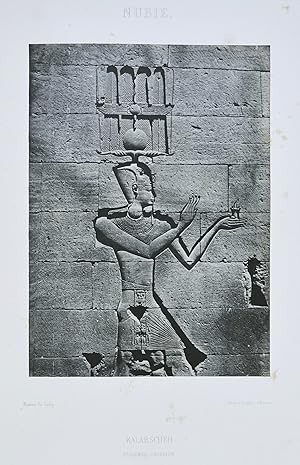
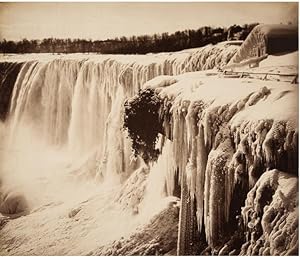
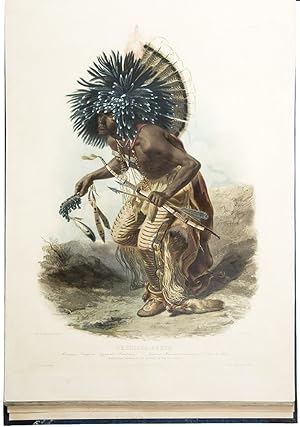
![Image du vendeur pour [Life-size photograph of the Fra Mauro map of the world].Venice, Carlo Naya, ca. 1871. Hand-coloured photograph, ca. 223 × 223 cm. Mounted and framed. mis en vente par Antiquariaat FORUM BV](https://pictures.abebooks.com/inventory/md/md30656456428.jpg)
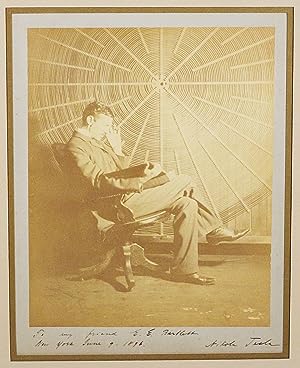
![Image du vendeur pour Waffenhandlung von den Rören. Musquetten. undt Spiessen. Gestalt nach der ordnung dess Hochgebornen Fursten und Herrn herrn Moritzen Printzen zu Oranien, Graffen zu Nassaw.The Hague, [Hillebrant Jacobsz. van Wouw, 1607-1608]. 3 parts in 1 volume. Small 1mo (37.5 x 28 cm). With engraved title-page and 117 full-page engraved plates (ca. 26 x 19 cm). All plates and the engraved title-page magnificently coloured and lavishly highlighted with silver and gold by a contemporary hand. 18th-century mottled calf, gold-tooled with the arms of the Count Palatine of Sulzbach and his wife on each board and richly gold-tooled spine. mis en vente par Antiquariaat FORUM BV](https://pictures.abebooks.com/inventory/md/md30605207730.jpg)
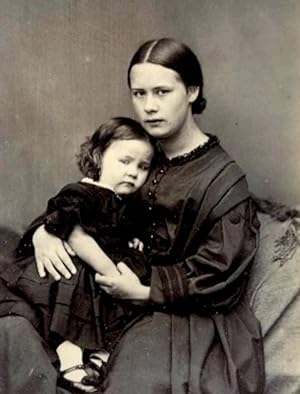
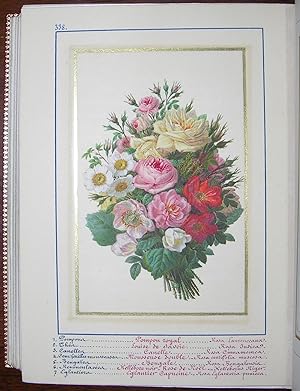

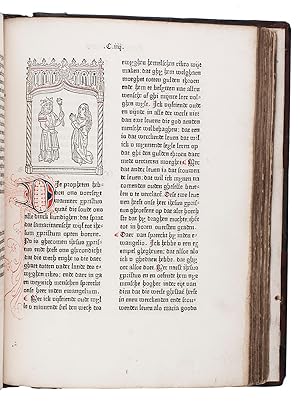
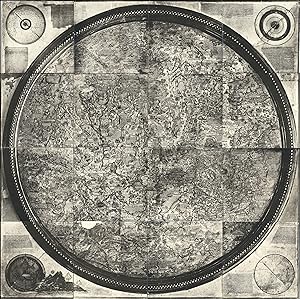
![Image du vendeur pour Memoires du voiage de Constantinople de Jacques de Bracle seigneur de Bassecourt.[Various places, [1570 or very soon after]. 4to (main text & decorated paper) & 8vo (transcription & drawings) (21.5 x 14.5 cm). Manuscript in French, written in brown ink on paper in a Flemish bastarda gothic hand, with about 26 lines per page. With 8 contemporary half-sheet specimens of Turkish decorated "silhouette" paper (folded to make 16 leaves in 2 quires), a series of 28 drawings in brown ink and coloured gouaches, highlighted in gold (mostly costume figures, some showing the Sultan and other leading figures, others showing anonymous types from various ethnic and religious groups), plus a ca. 1800, transcript of the complete text and biography of the author (with his arms in colour). Modern sheepskin parchment. mis en vente par Antiquariaat FORUM BV](https://pictures.abebooks.com/inventory/md/md30334291524.jpg)
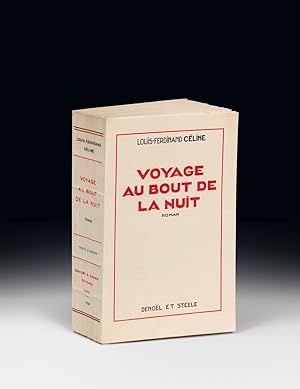
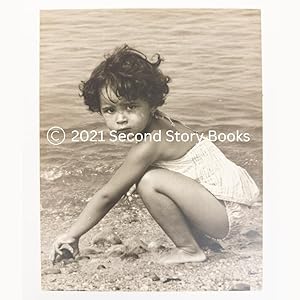
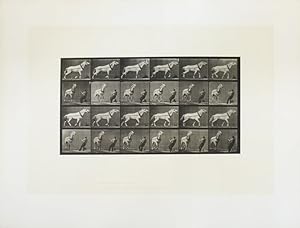
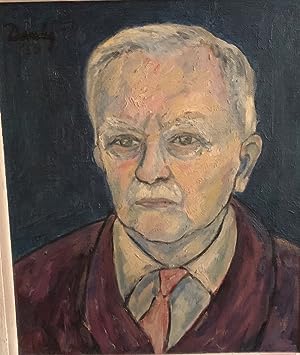
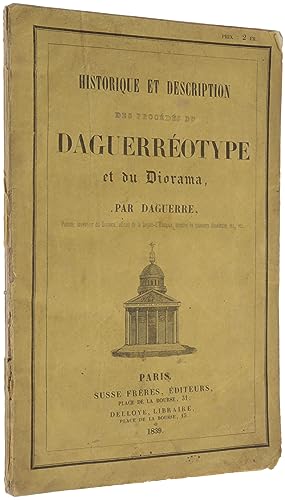
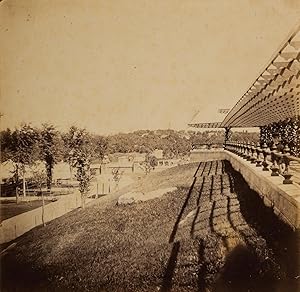
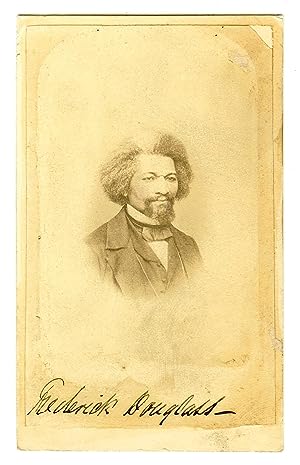
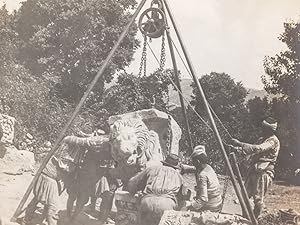
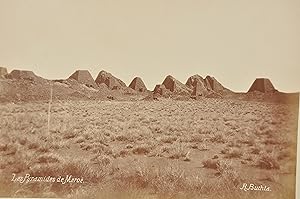
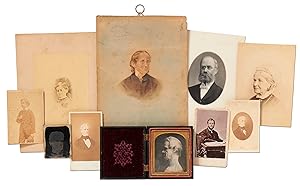
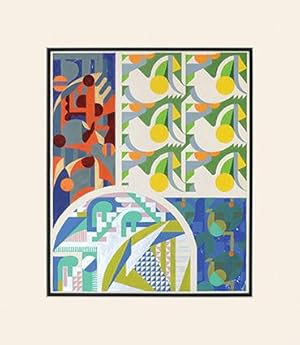
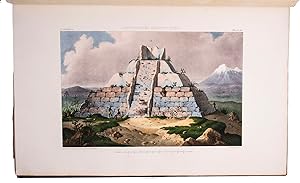
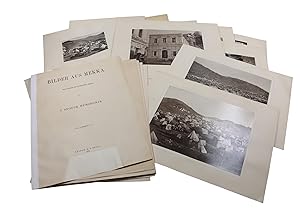
![Image du vendeur pour [Binding title:] Abregé de la marine du Roy 1732.[Paris?, 1732]. 13.5×19 cm. Manuscript in brown-black, red and blue ink on vellum, some of the lettering and borders gilt. With a beautiful frontispiece painting in coloured gouaches (14×9.5 cm) pasted on the page facing the opening of the text, showing a small warship at a shipyard in a small harbour being repaired by workmen. Contemporary red morocco, gold-tooled spine, gold-tooled fillets on boards and board edges, richly gold-tooled frame, gilt edges. mis en vente par ASHER Rare Books](https://pictures.abebooks.com/inventory/md/md22744464773.jpg)
![Image du vendeur pour Portraits of the winning horses of the Great St. Leger Stakes, at Doncaster, from the year 1815 to the present year inclusive. London, S. and J. Fuller (printed by L. Harrison), [1828]. Imperial folio (60×42 cm). With engraved vignette on the letterpress title-page, 14 hand-coloured aquatint plates by T. Sutherland and R. G. Reeve after Herring, each with information on a separate letterpress leaf. Contemporary plain boards with publisher's printed label wrapper-title on front board (rebacked with burgundy half morocco and matching corners). mis en vente par Antiquariaat FORUM BV](https://pictures.abebooks.com/inventory/md/md30690369191.jpg)
